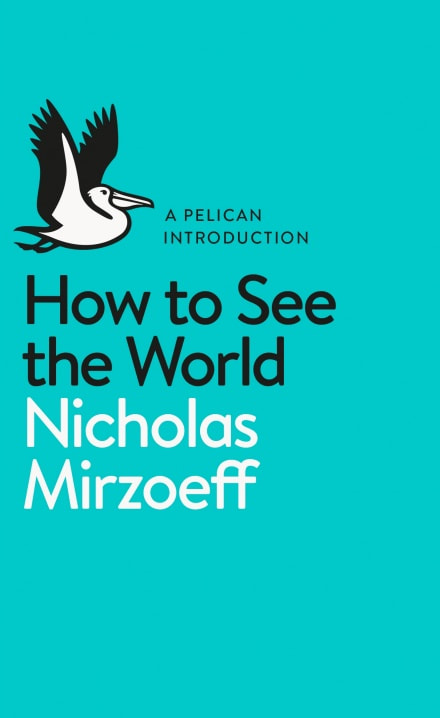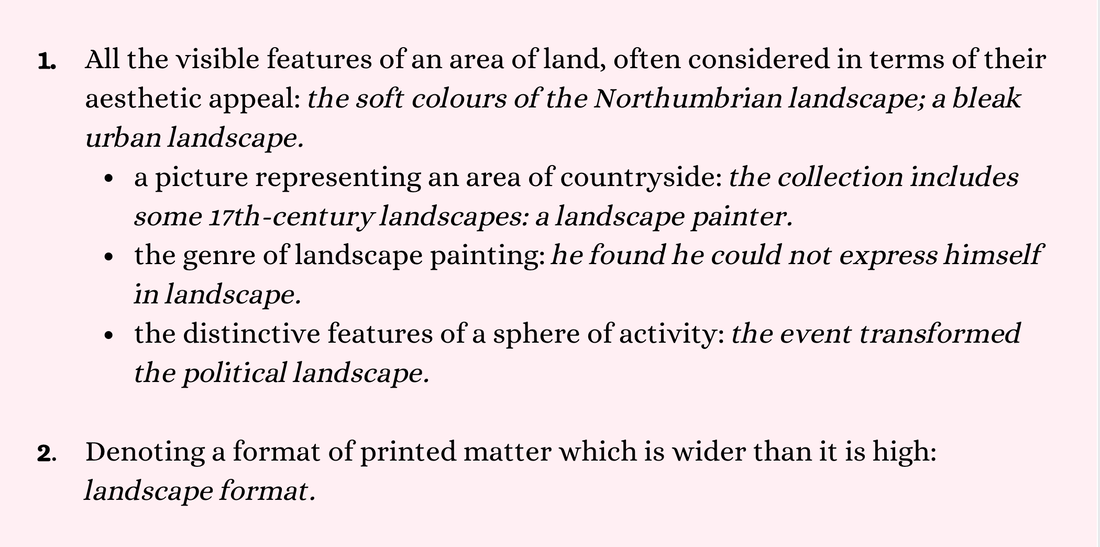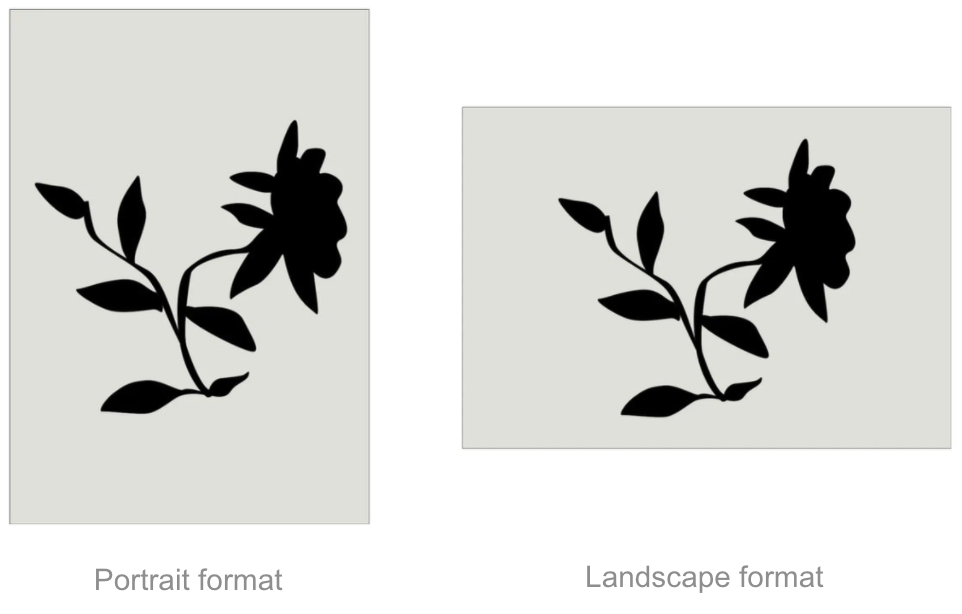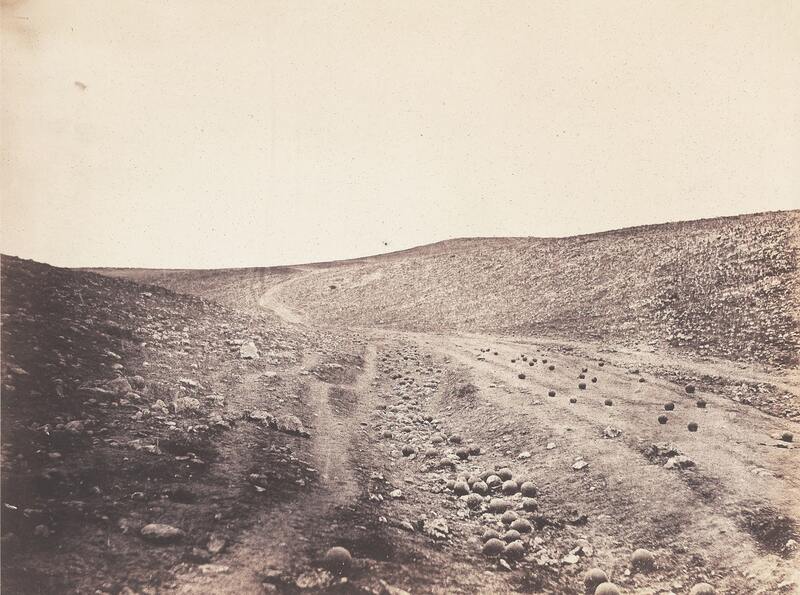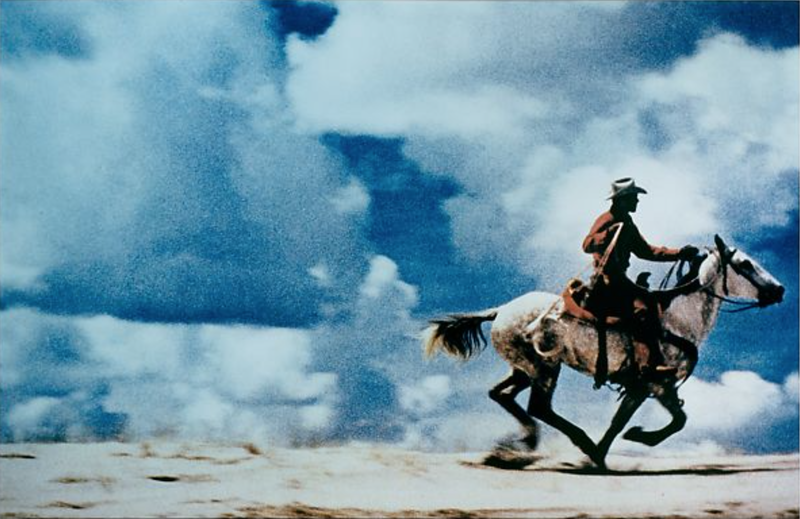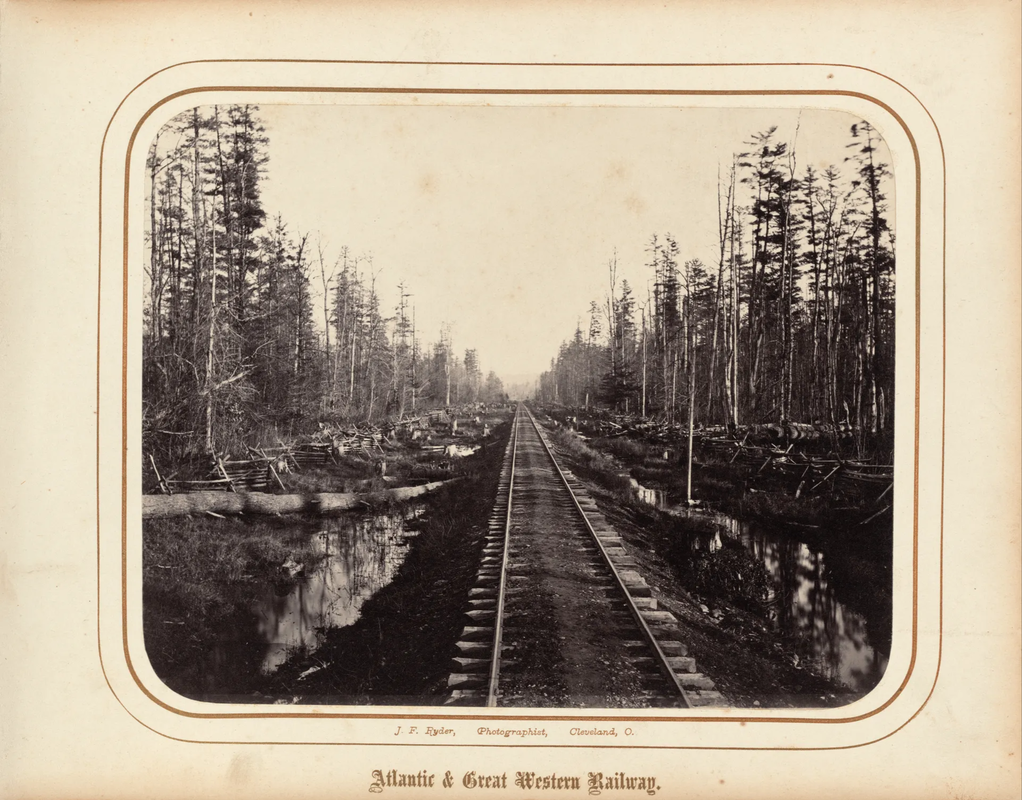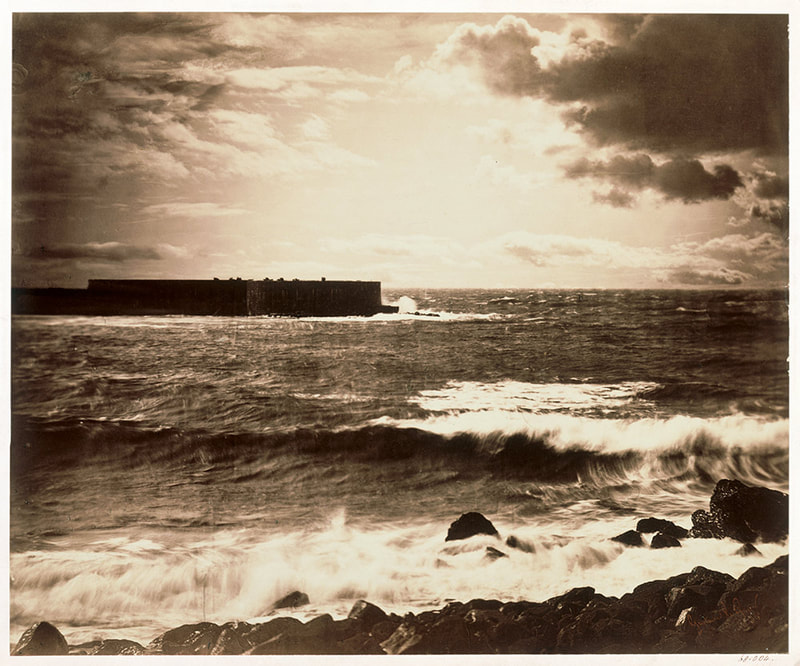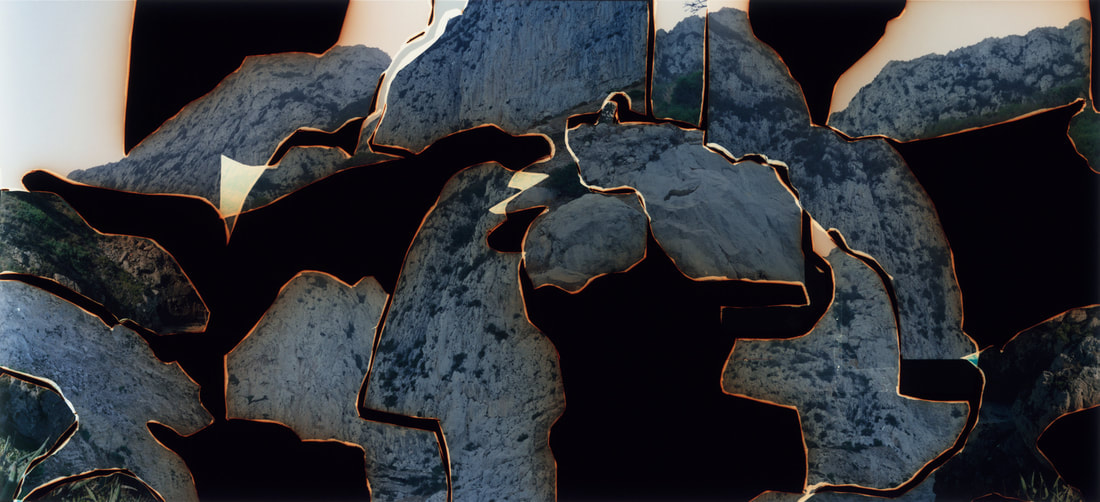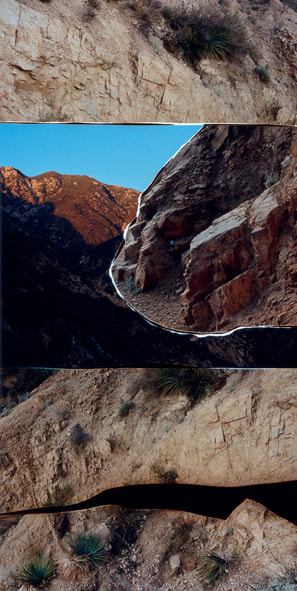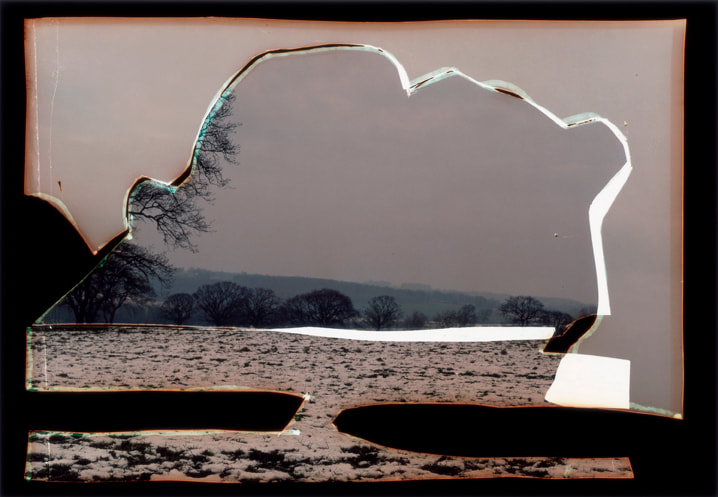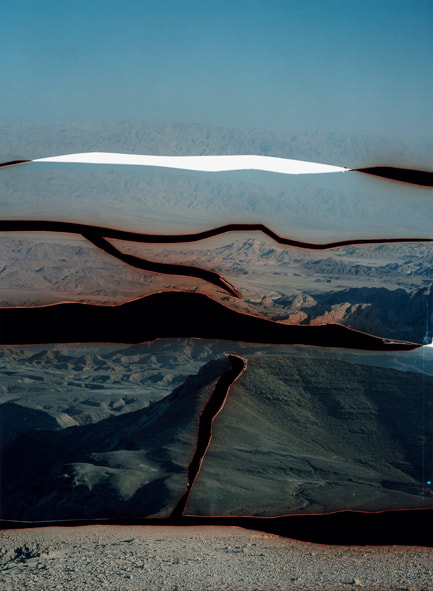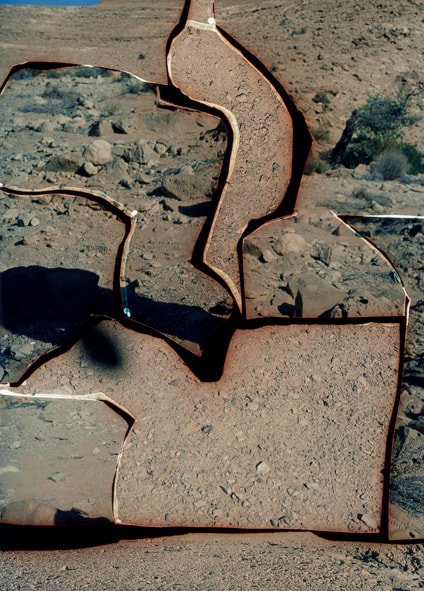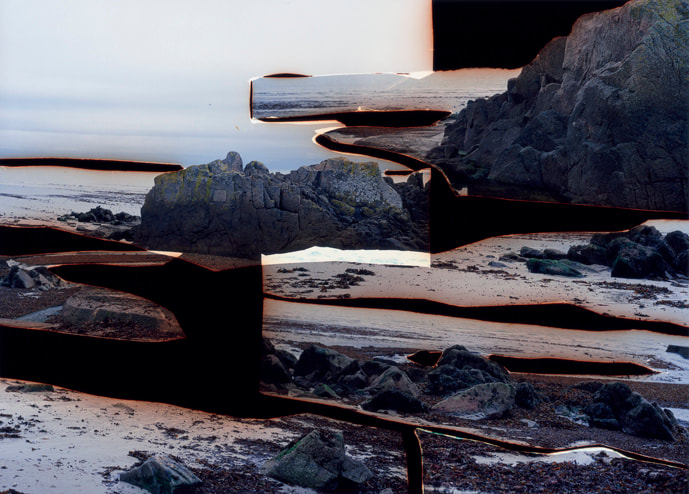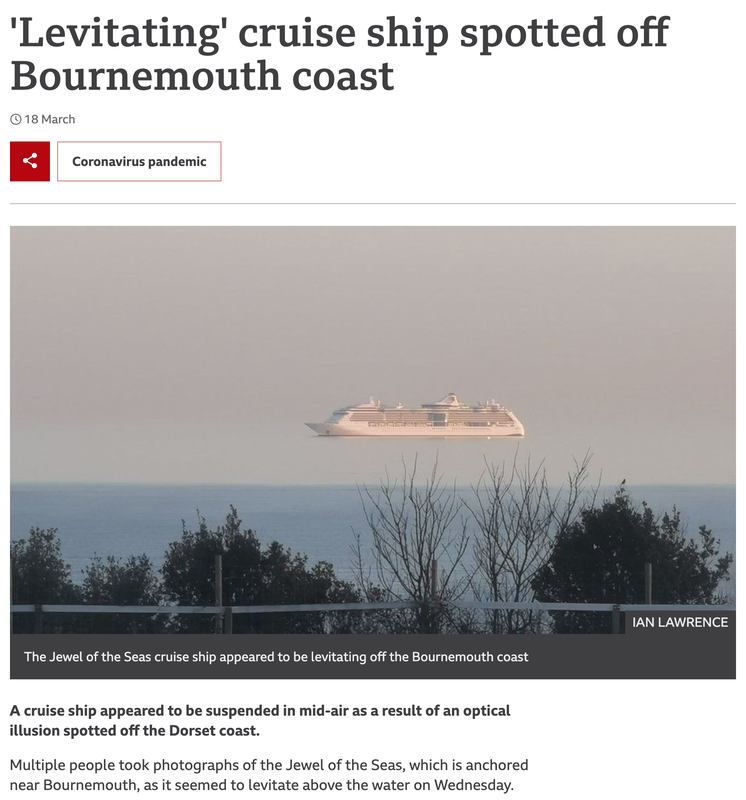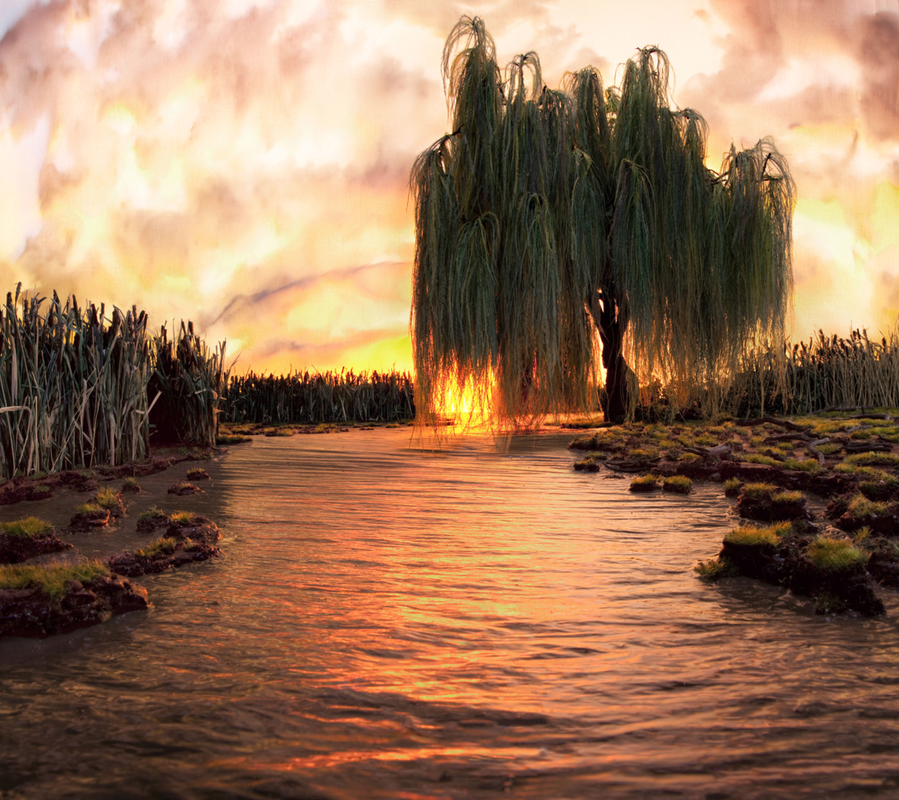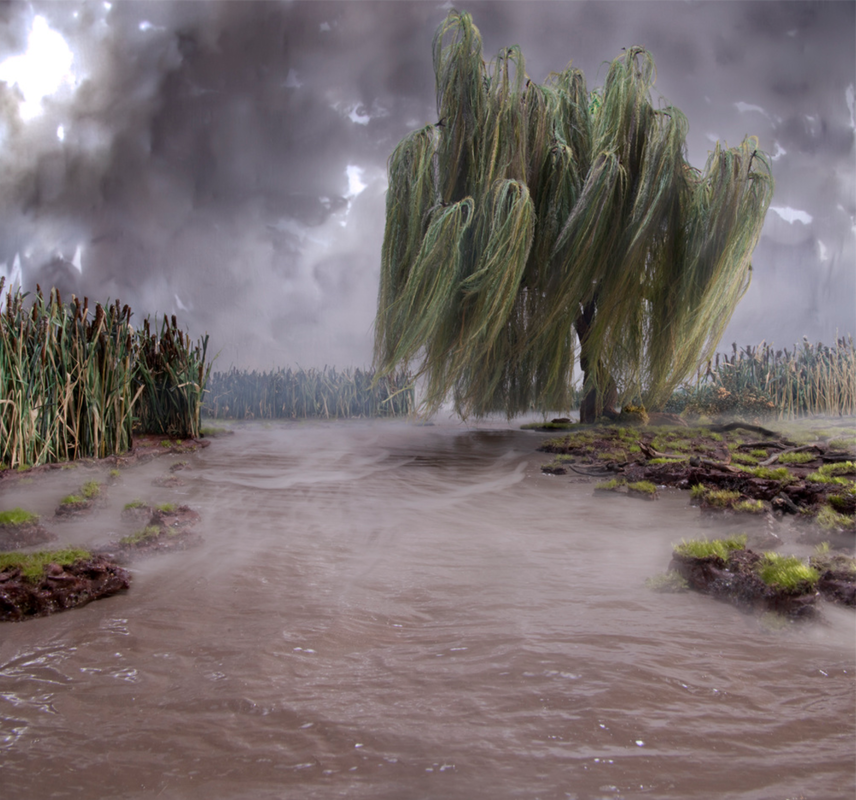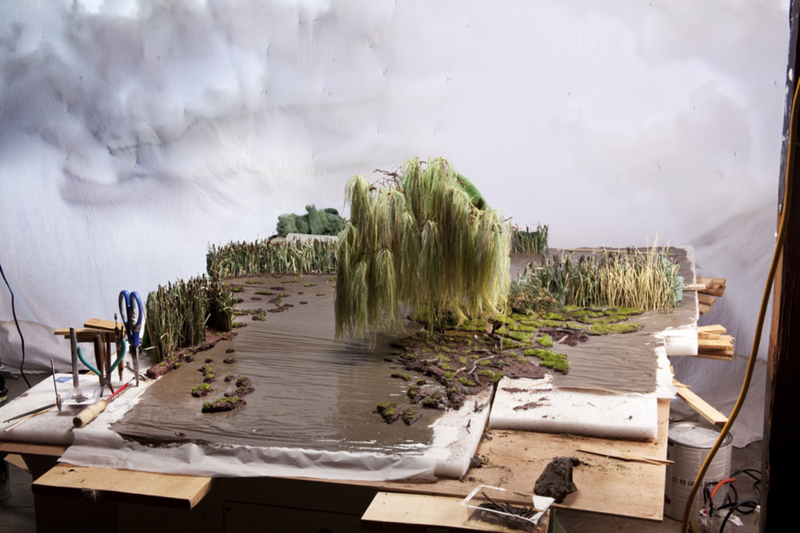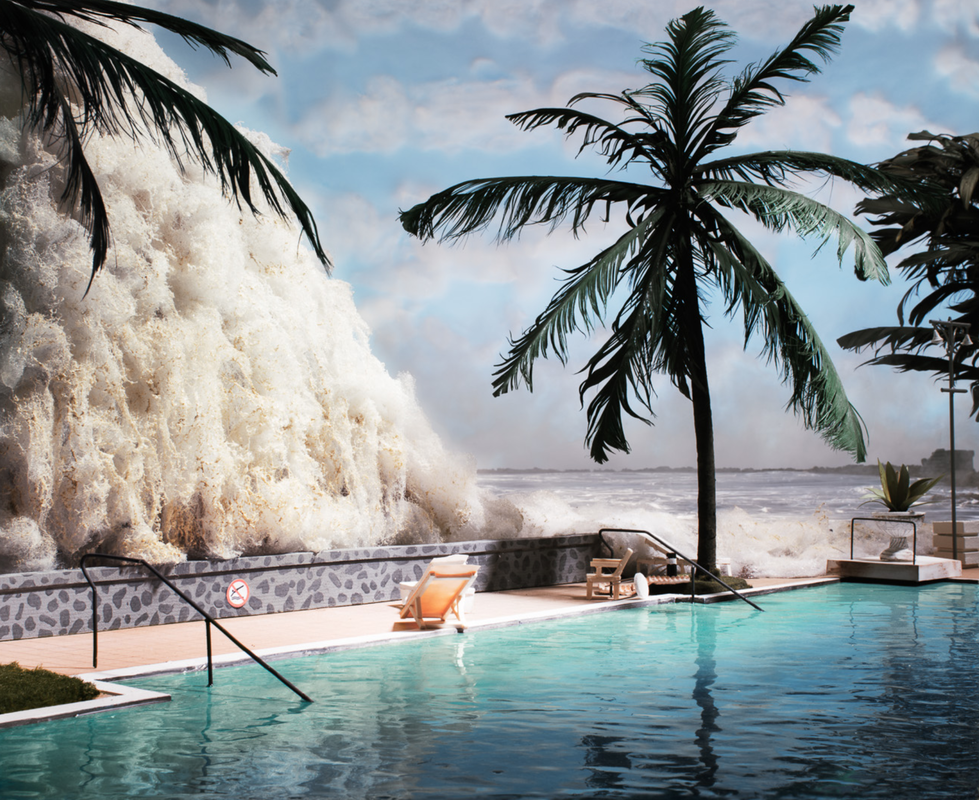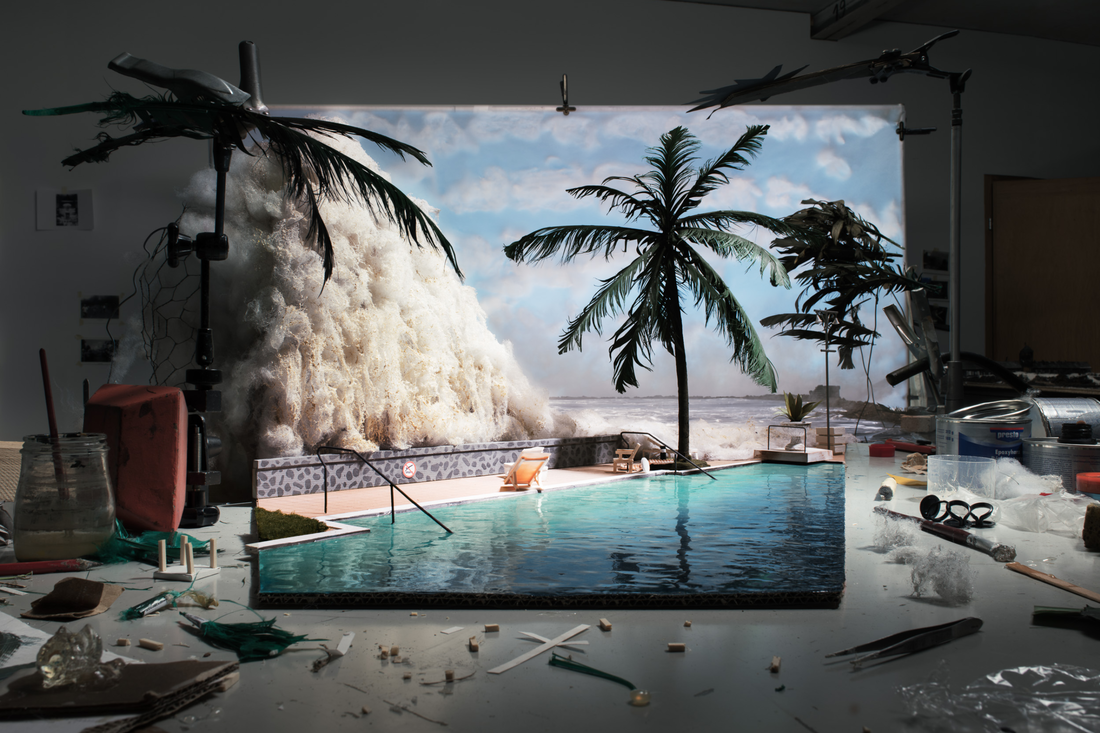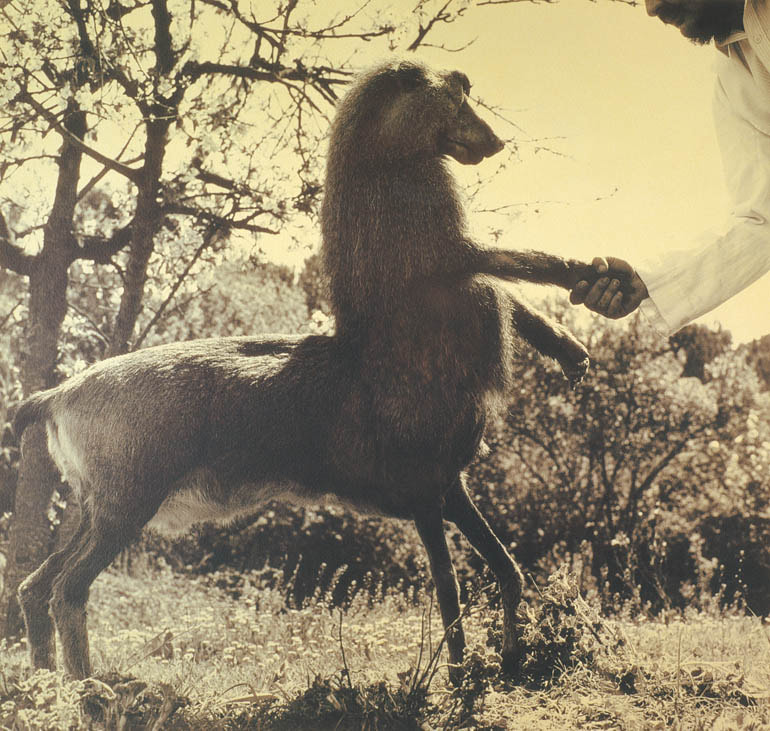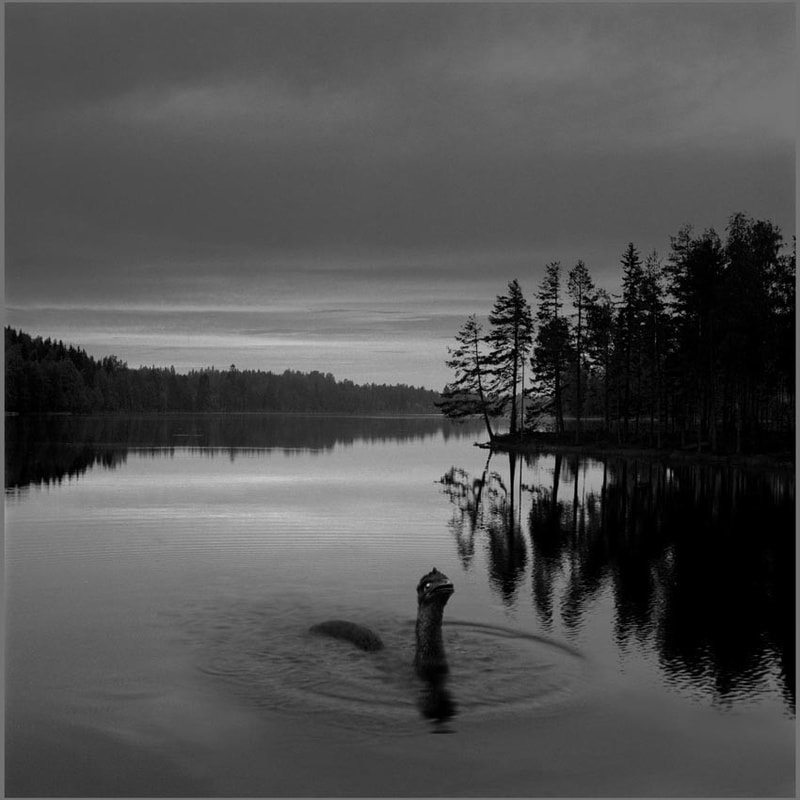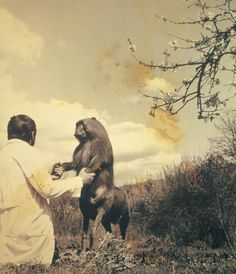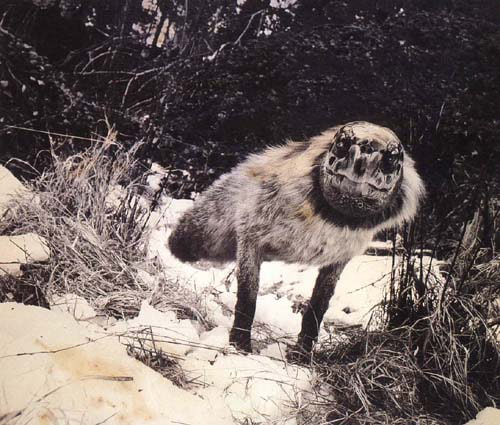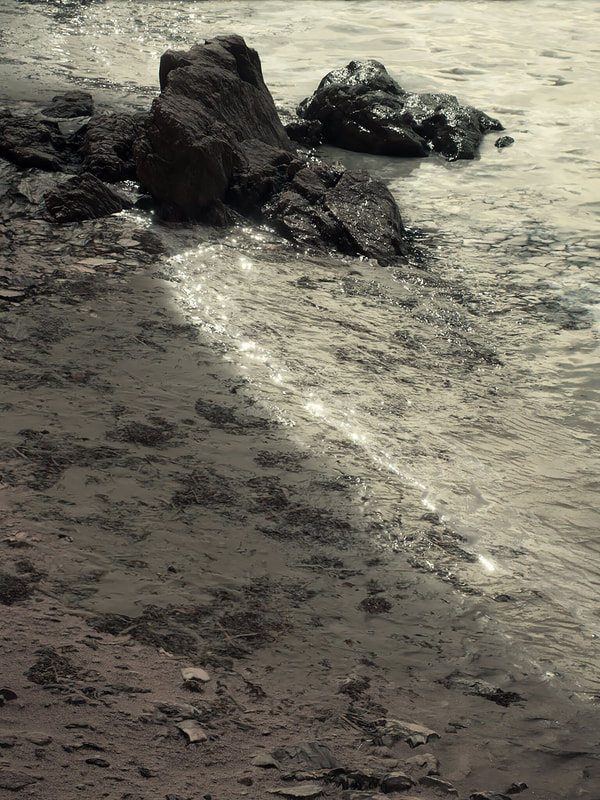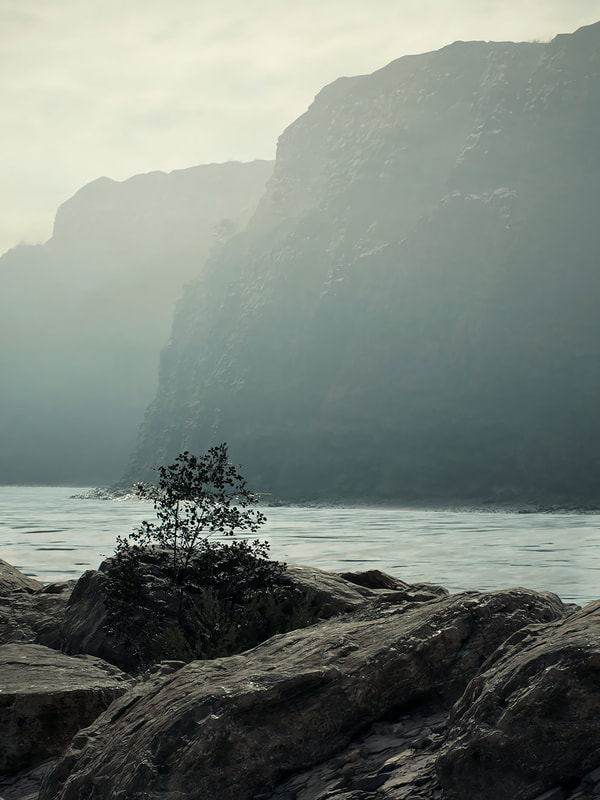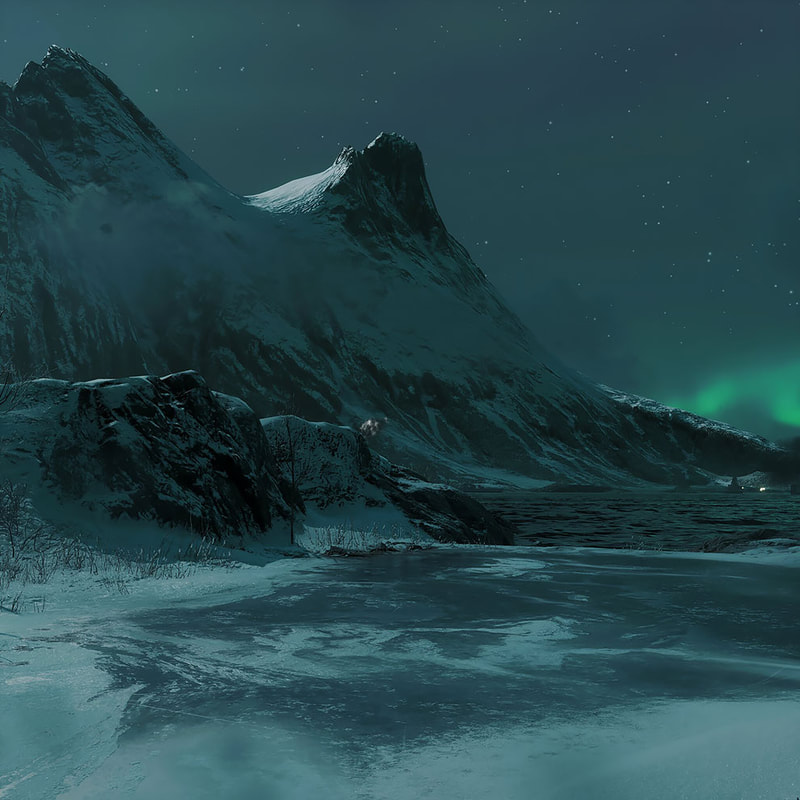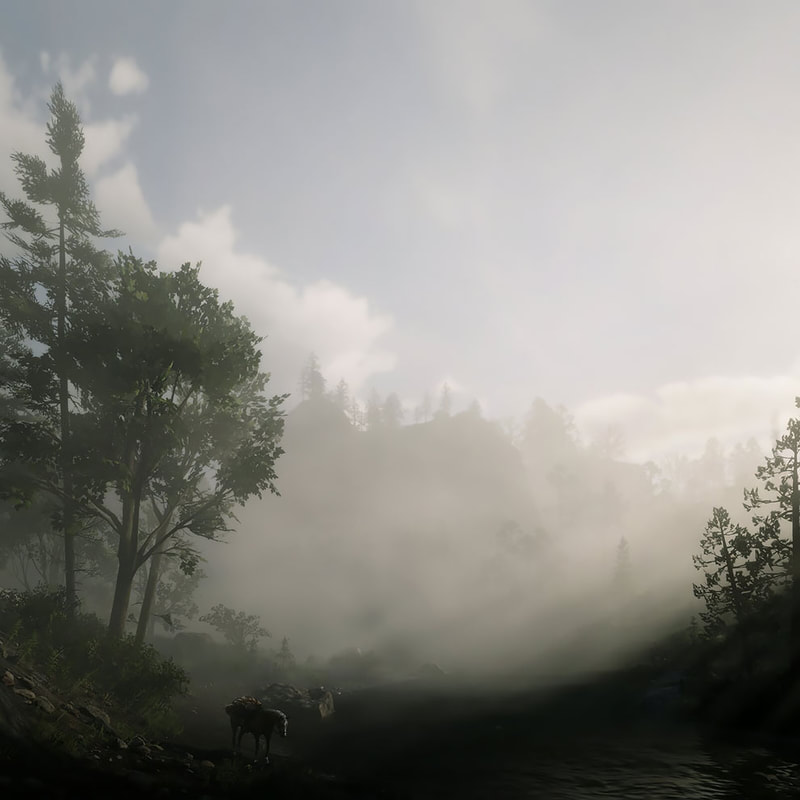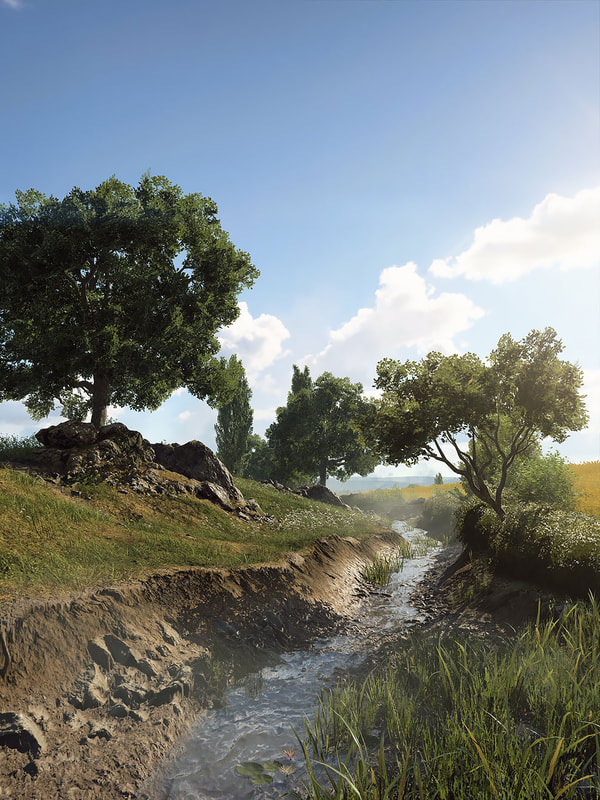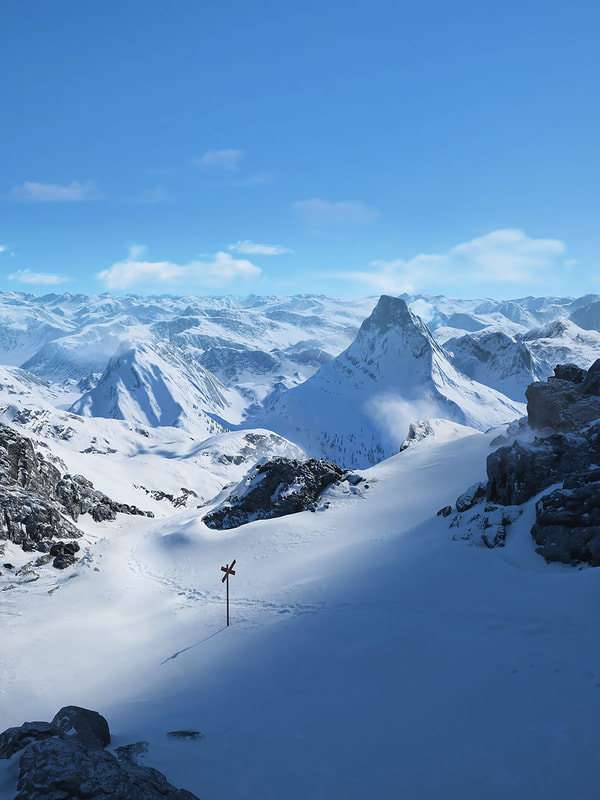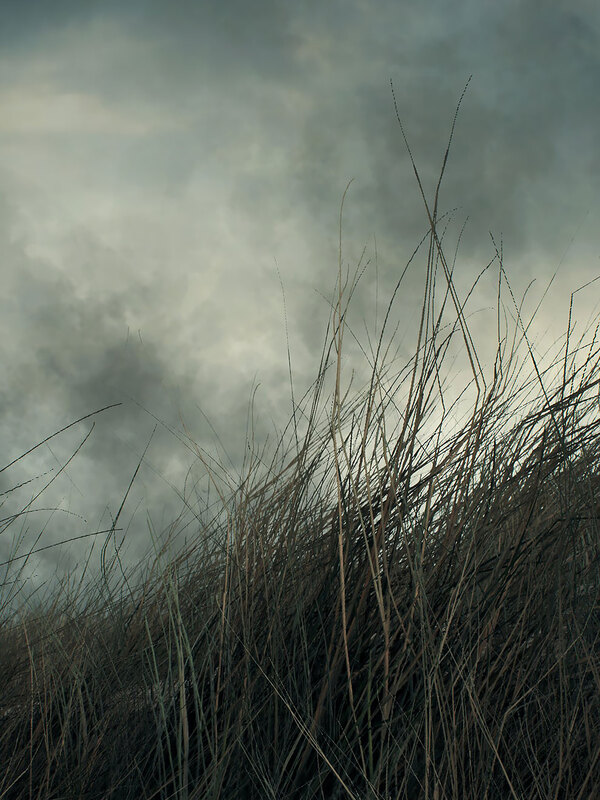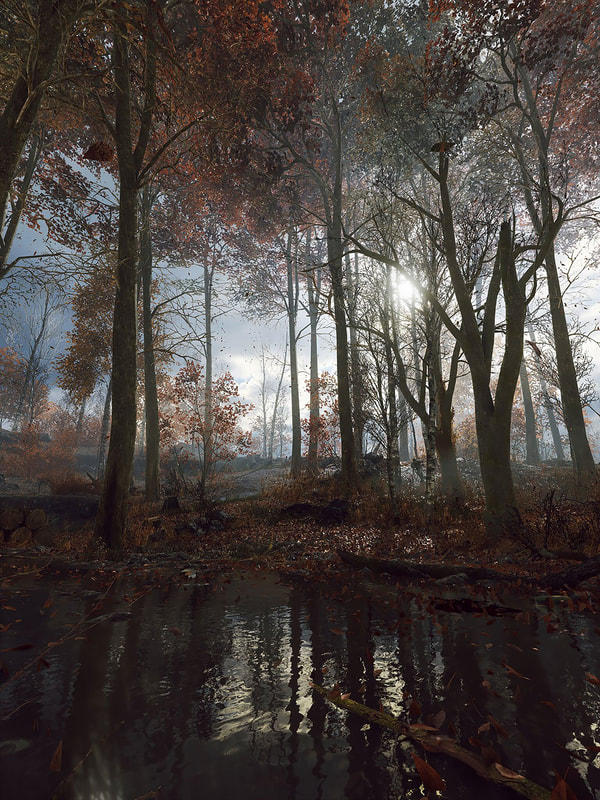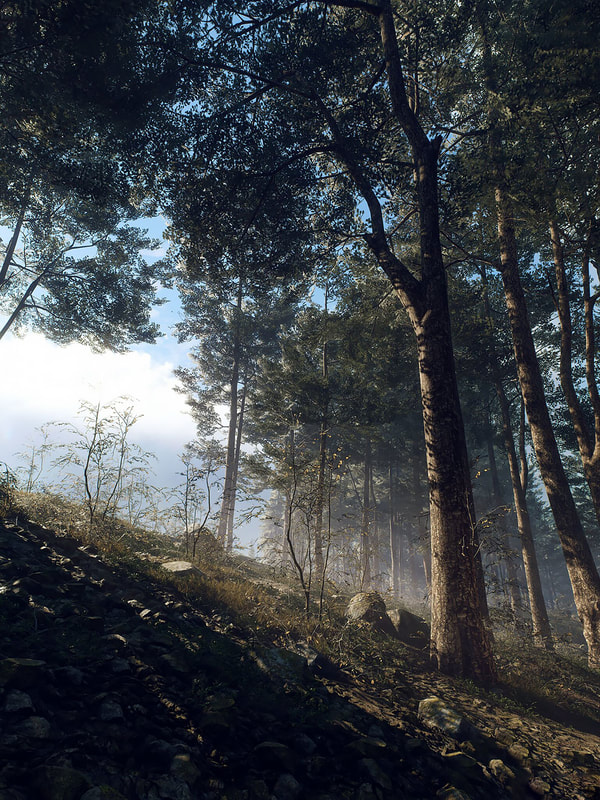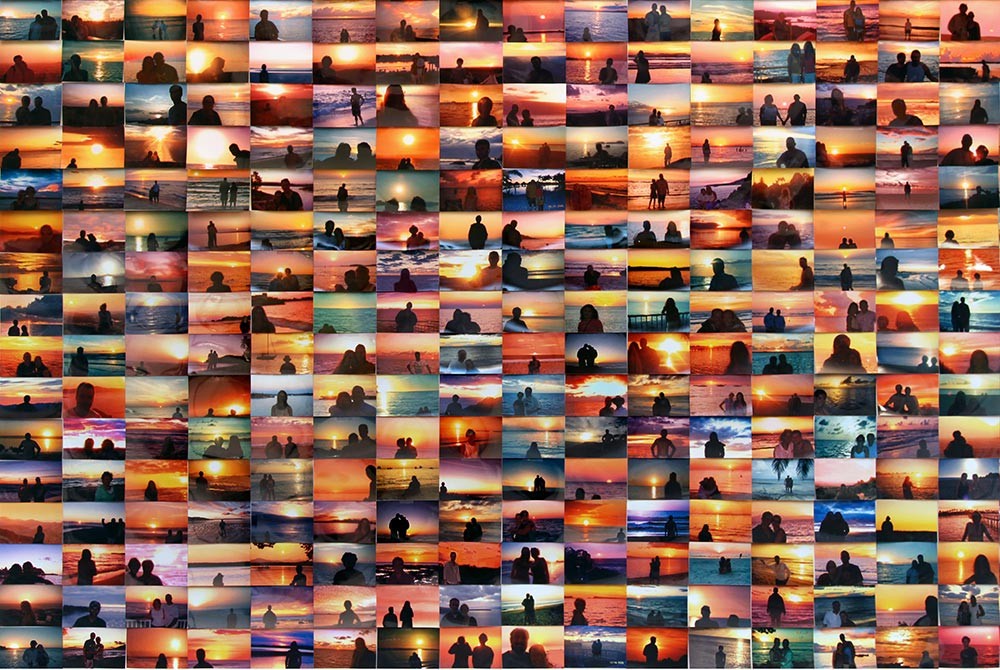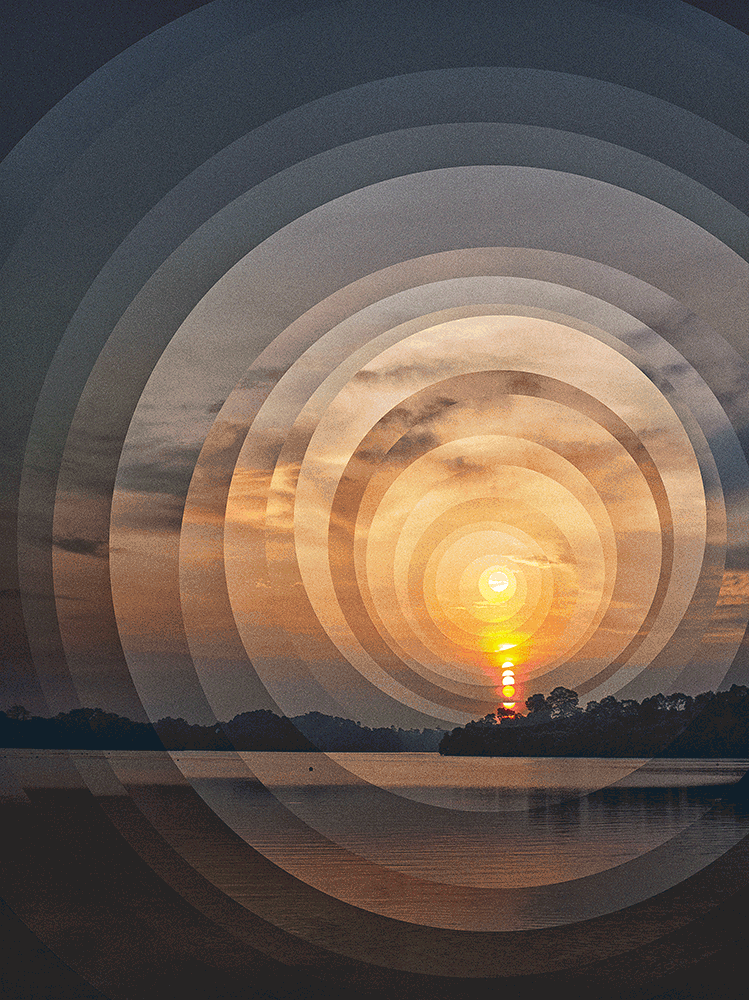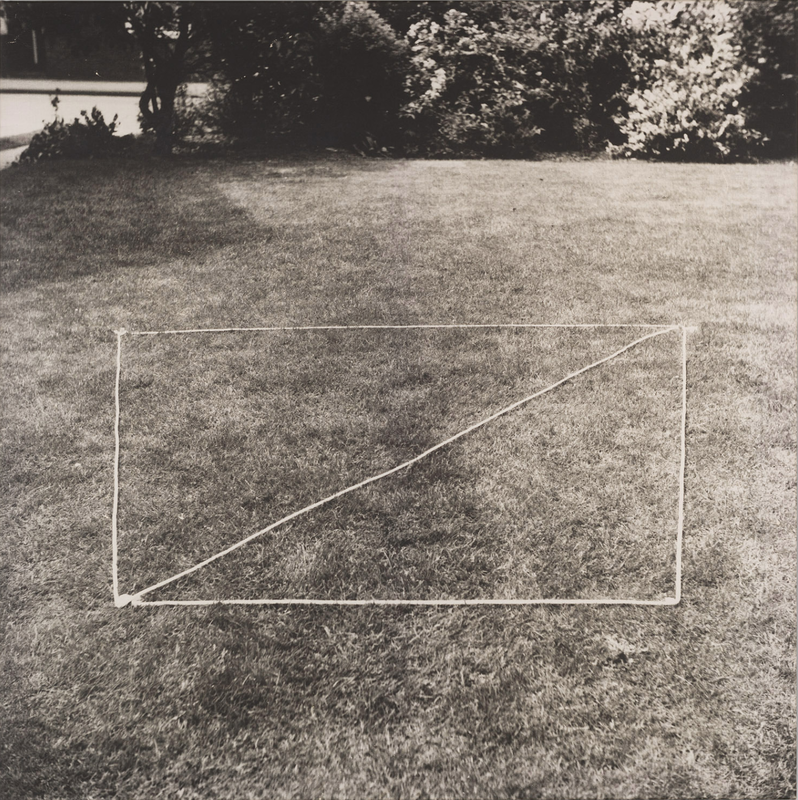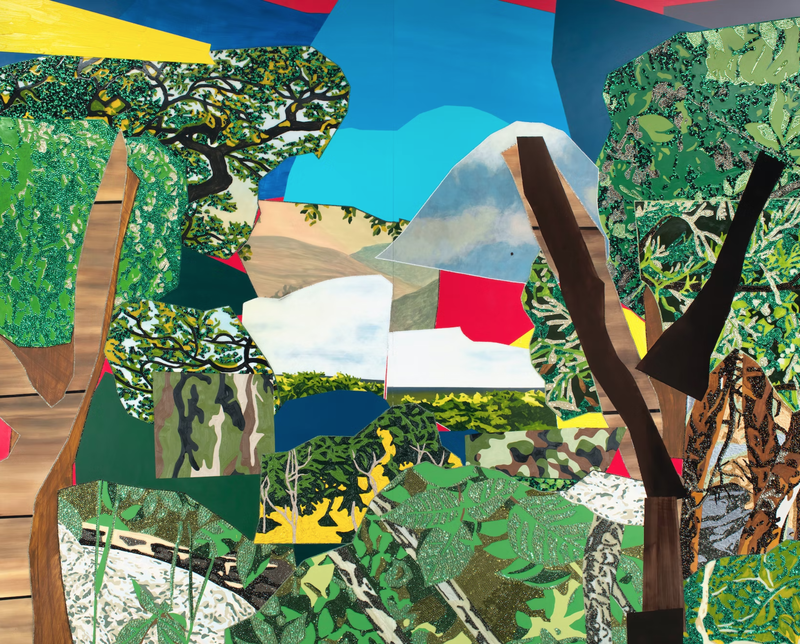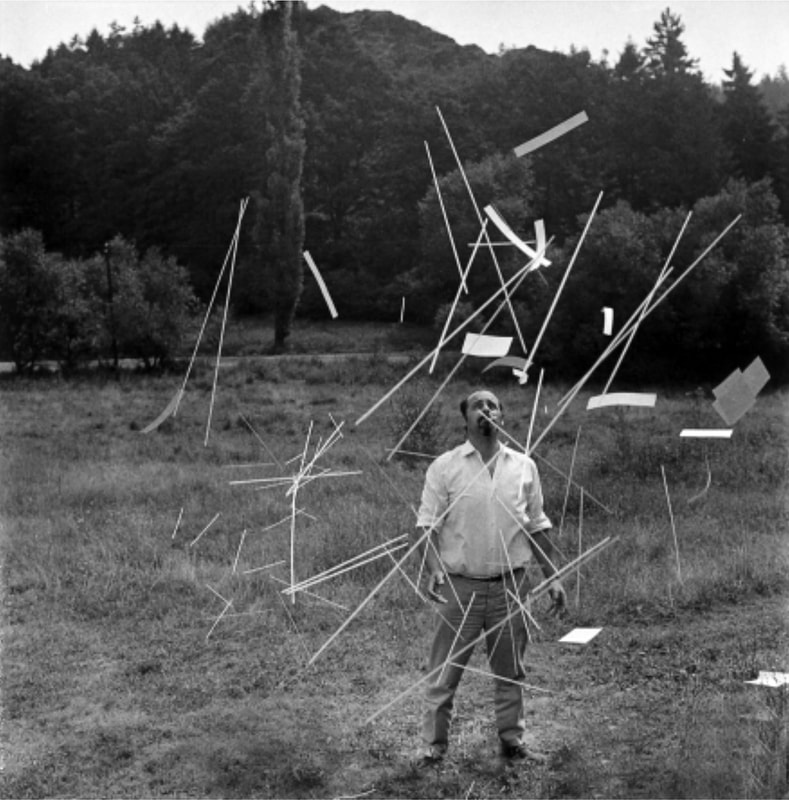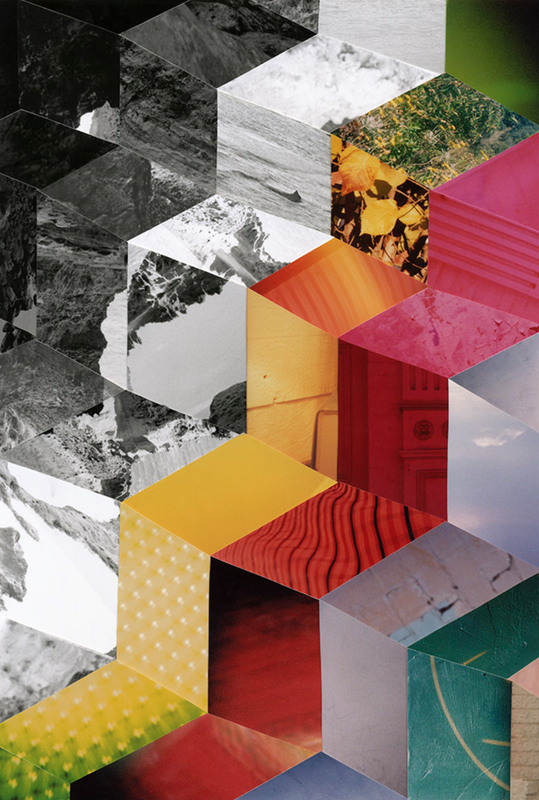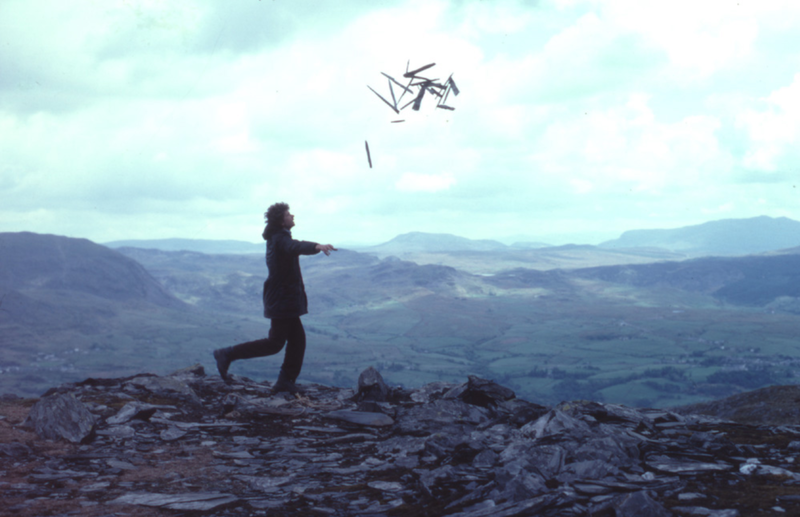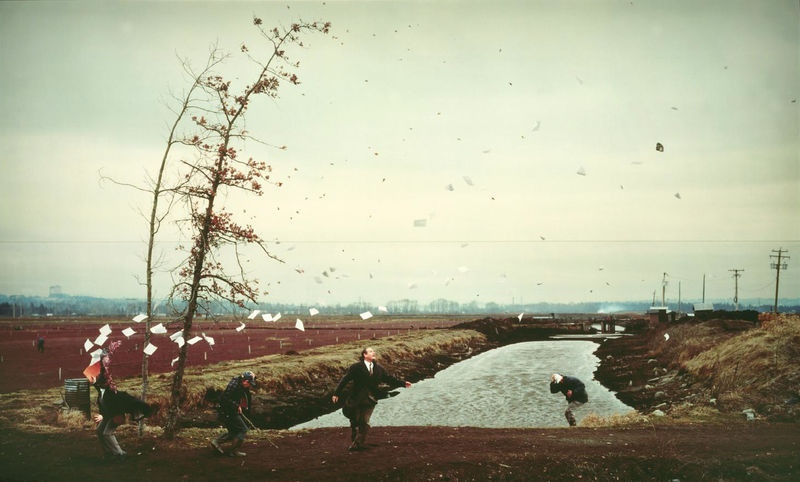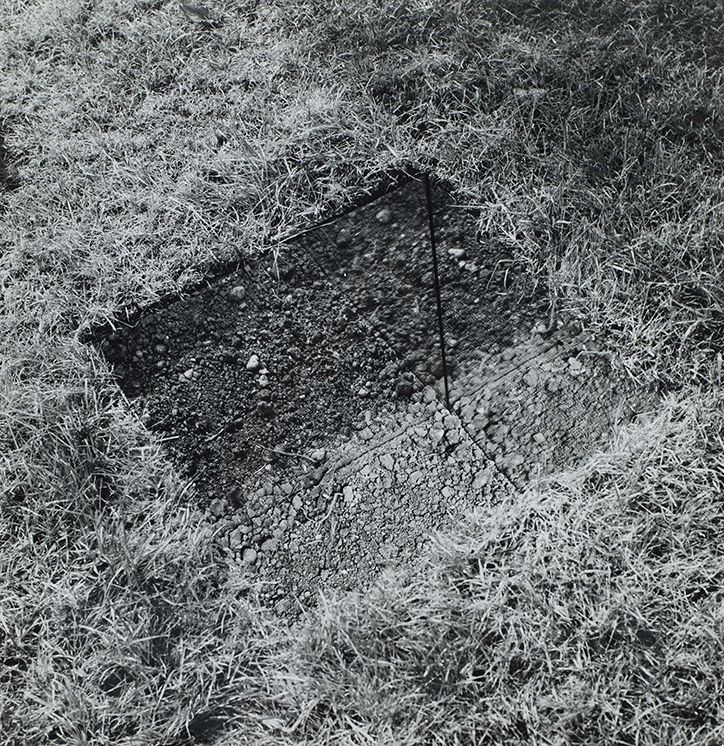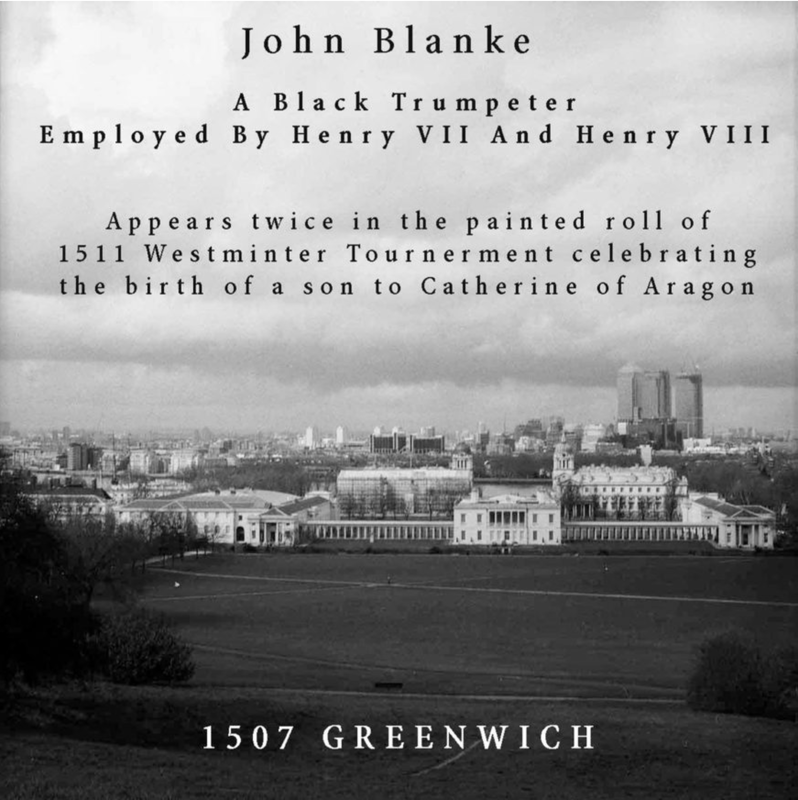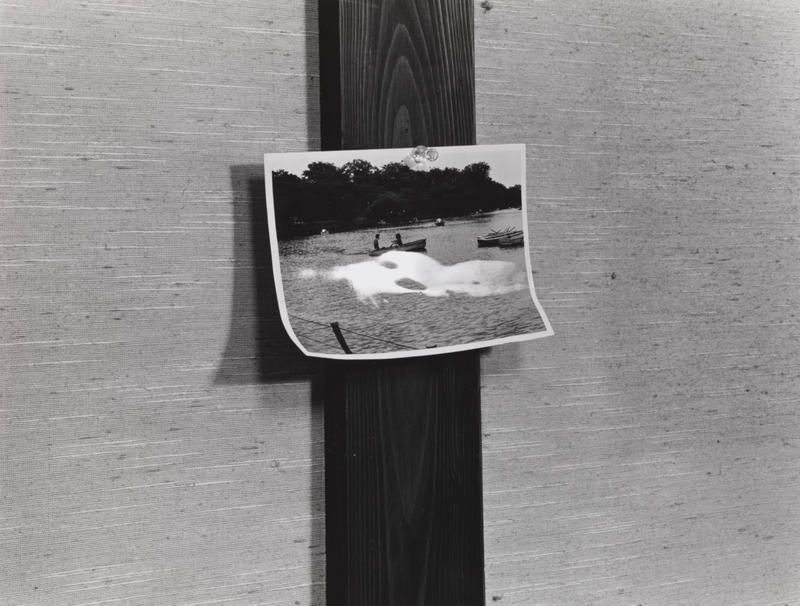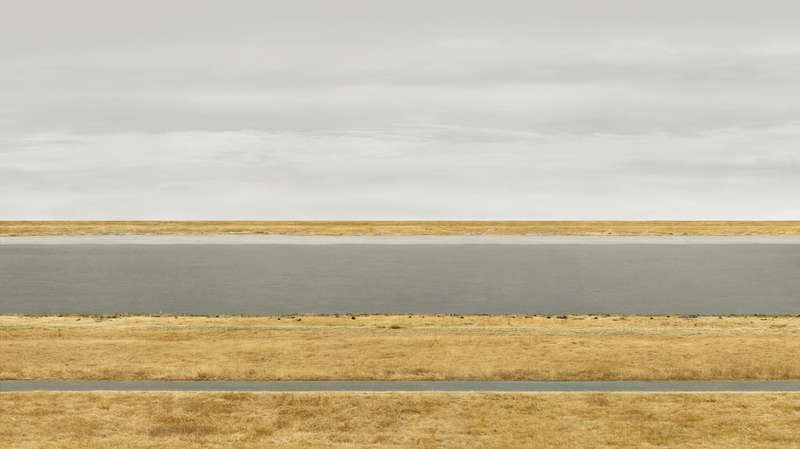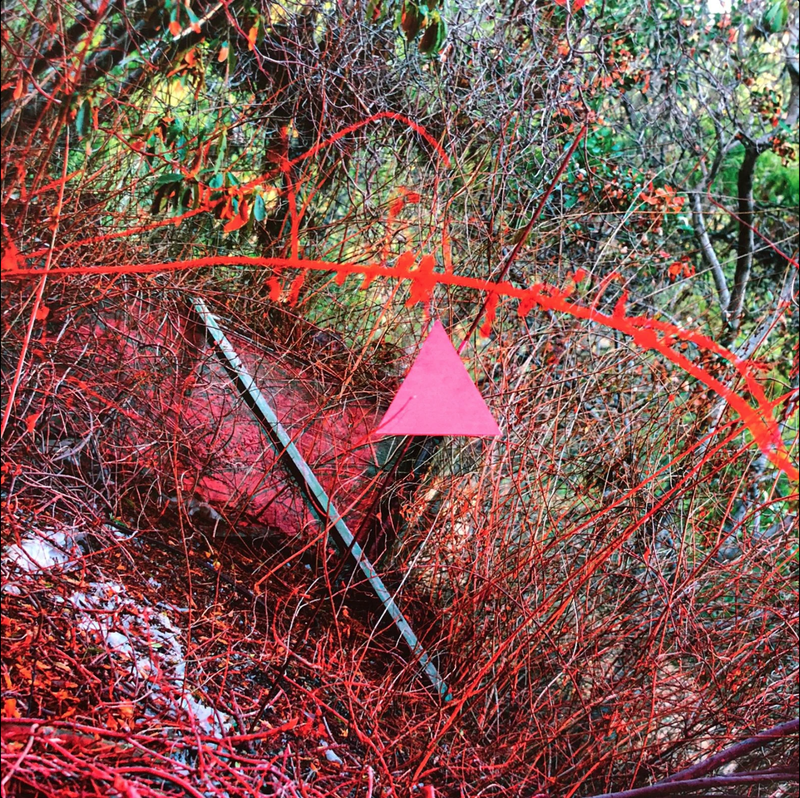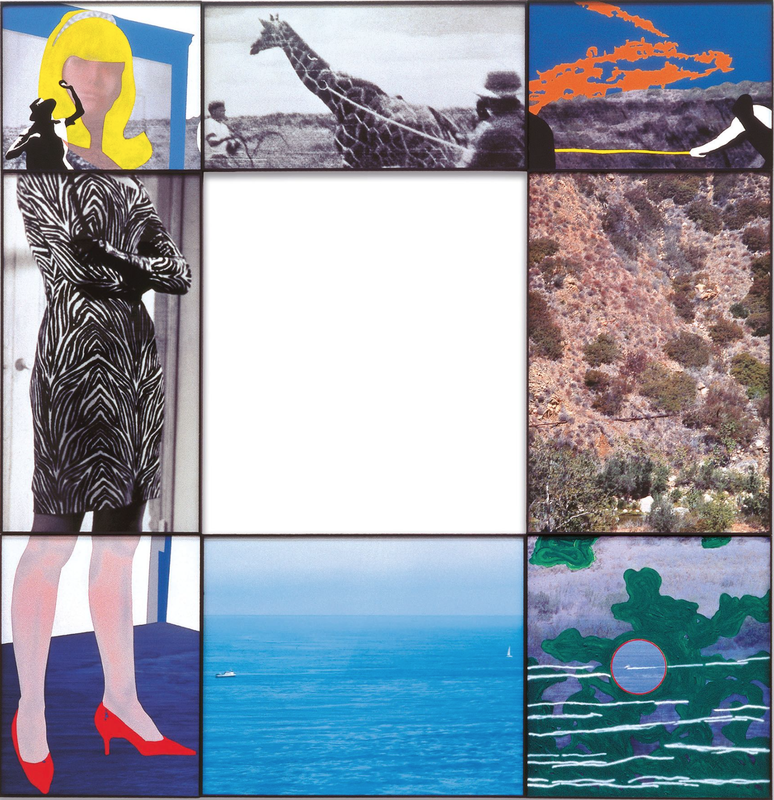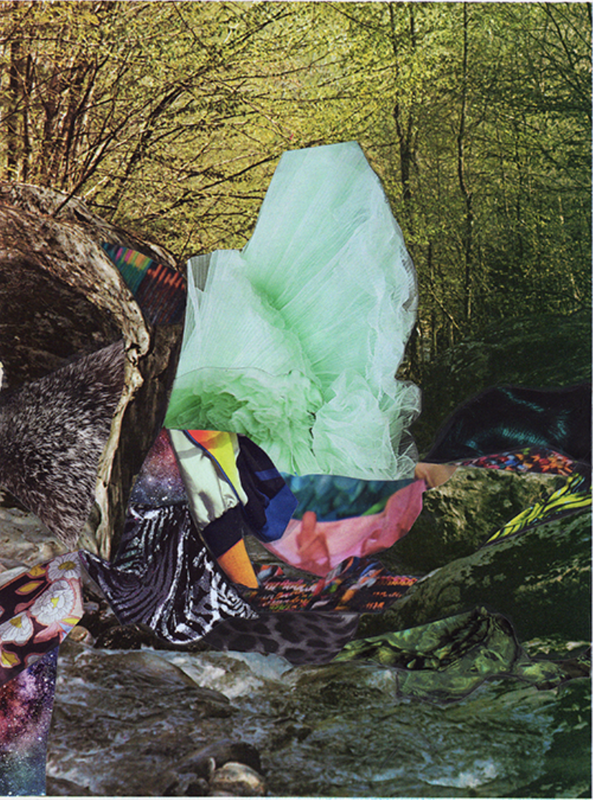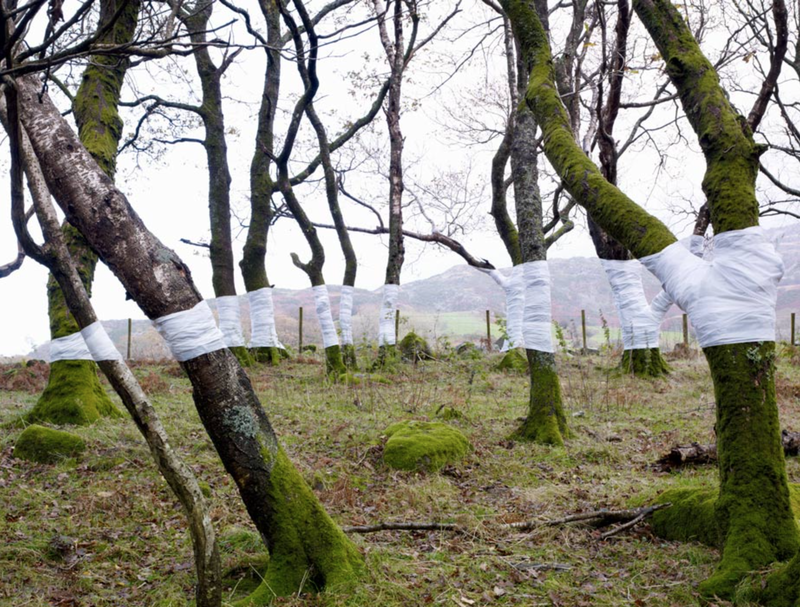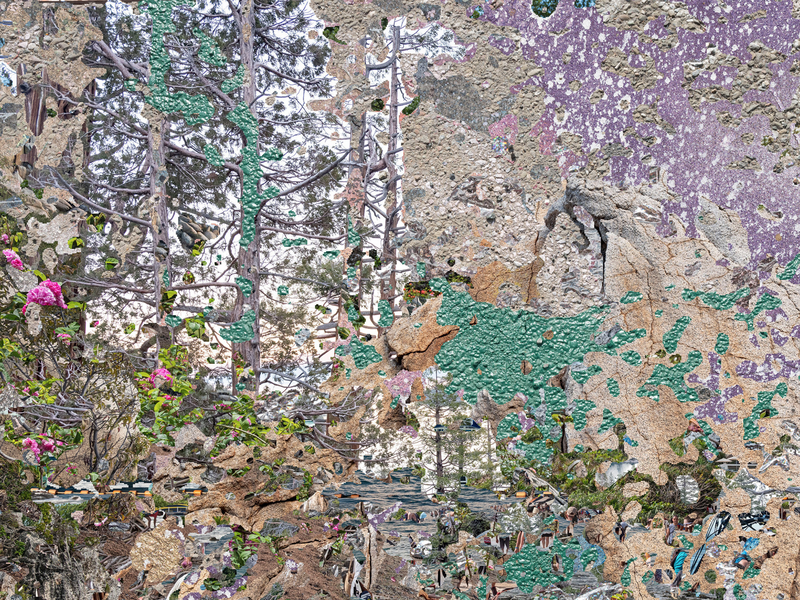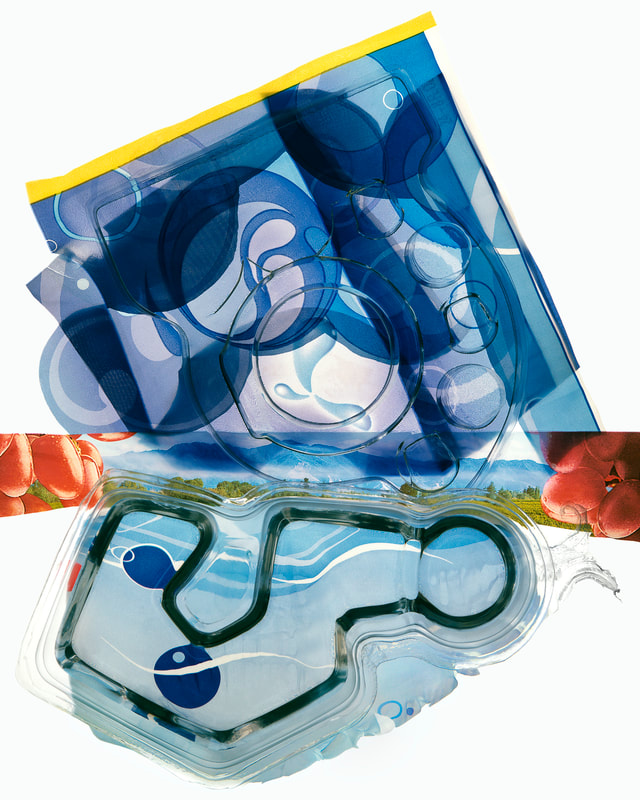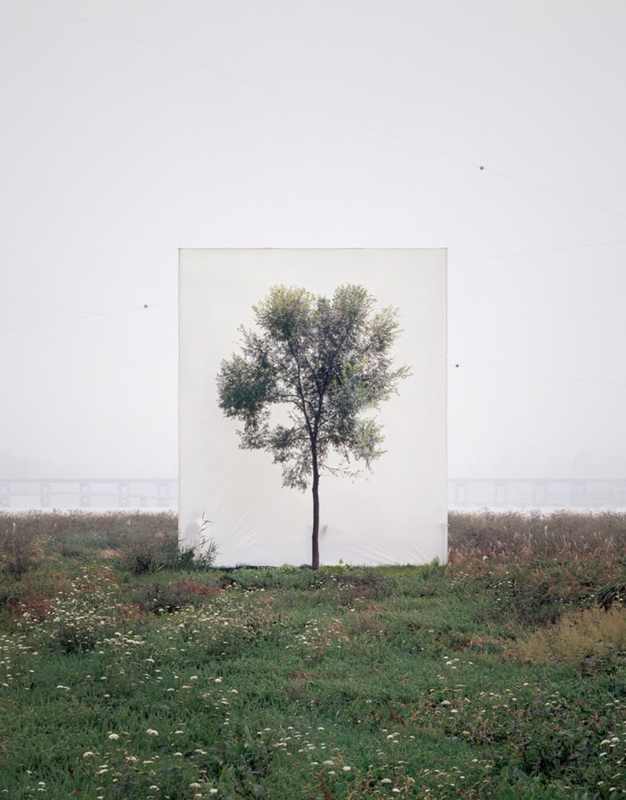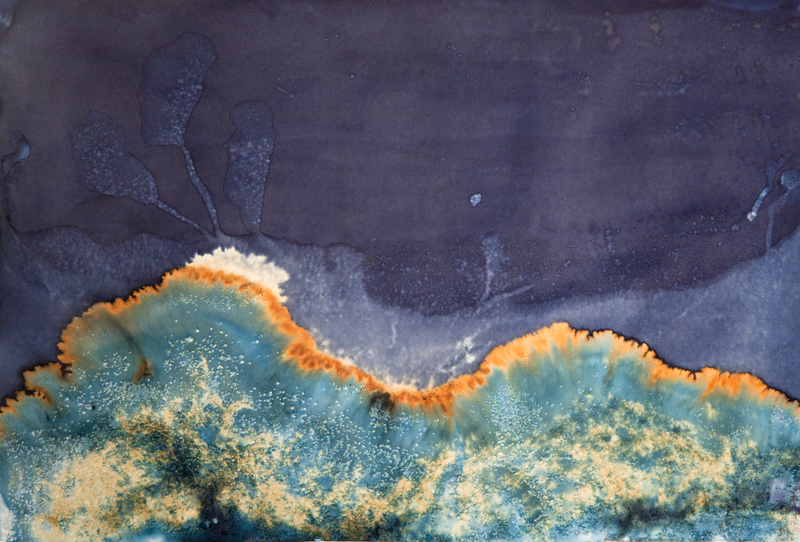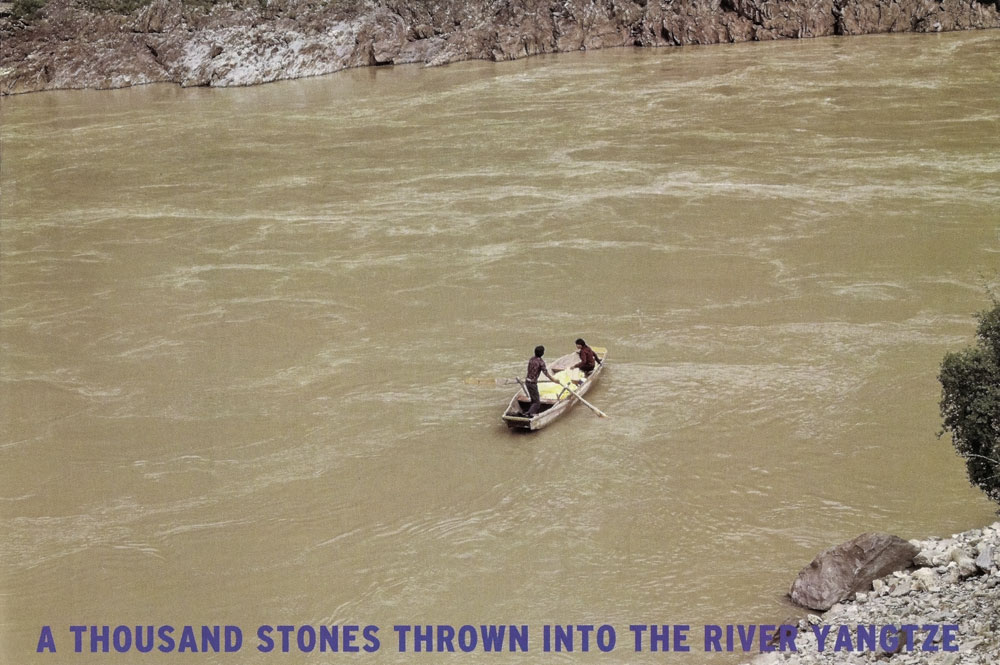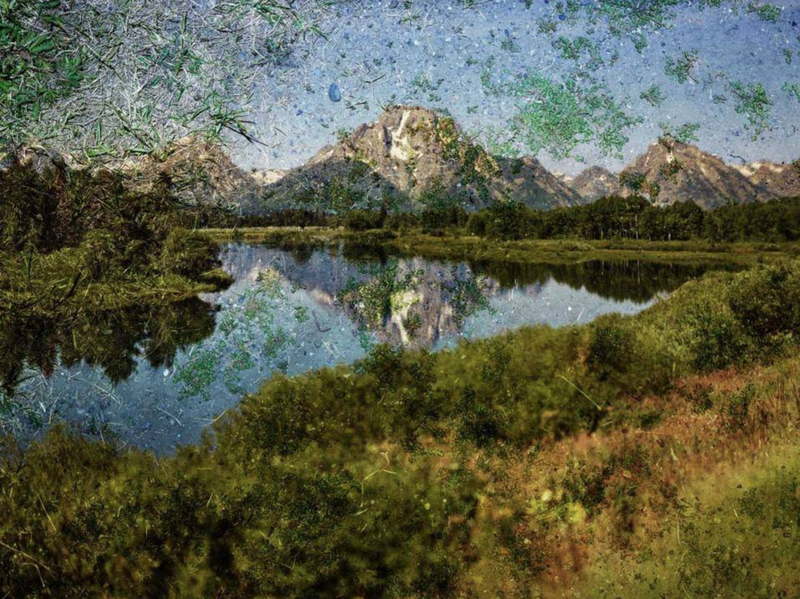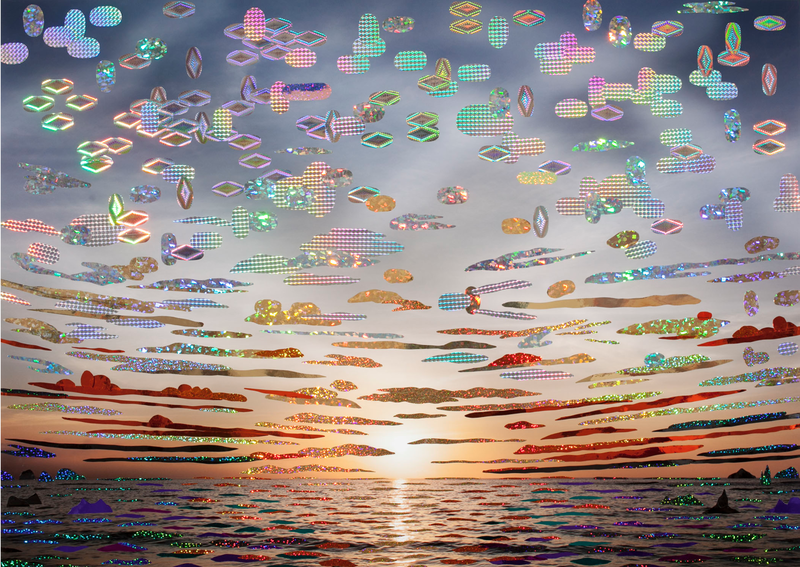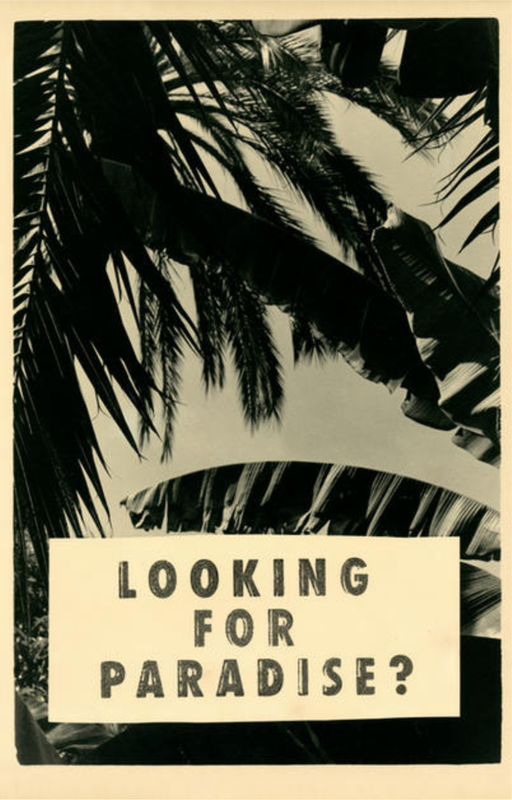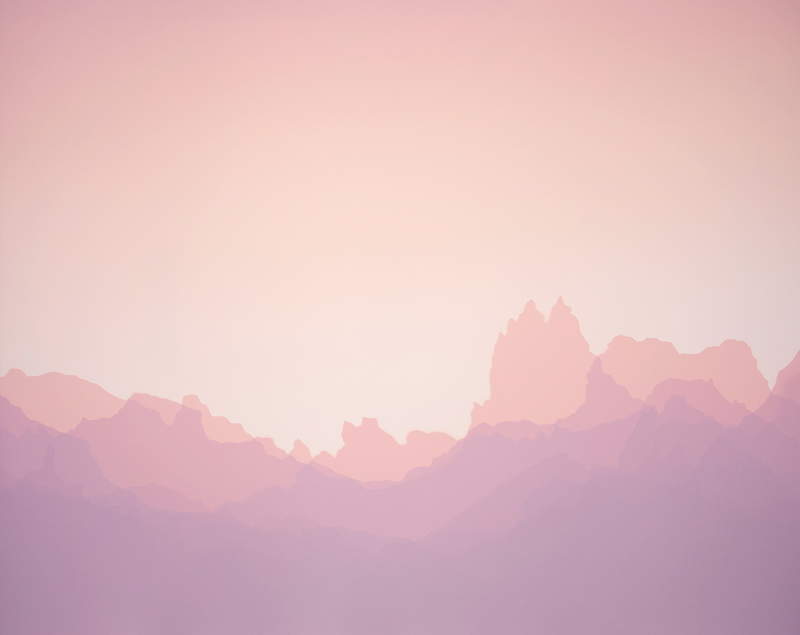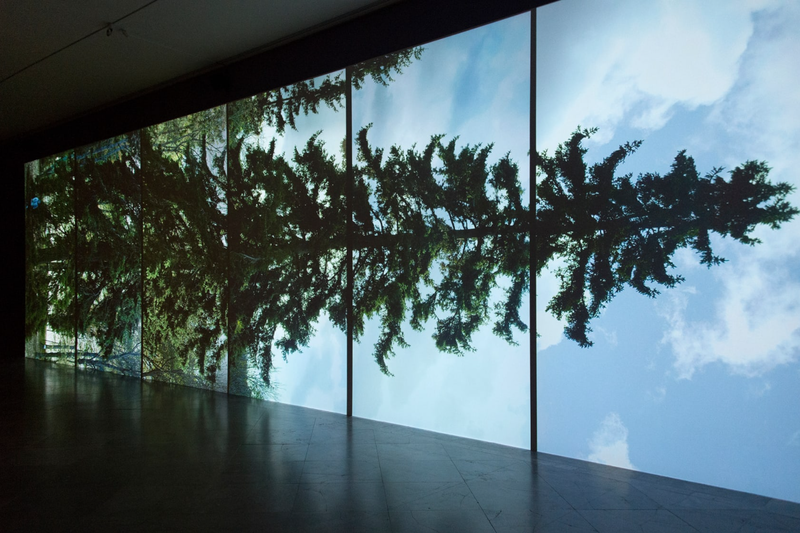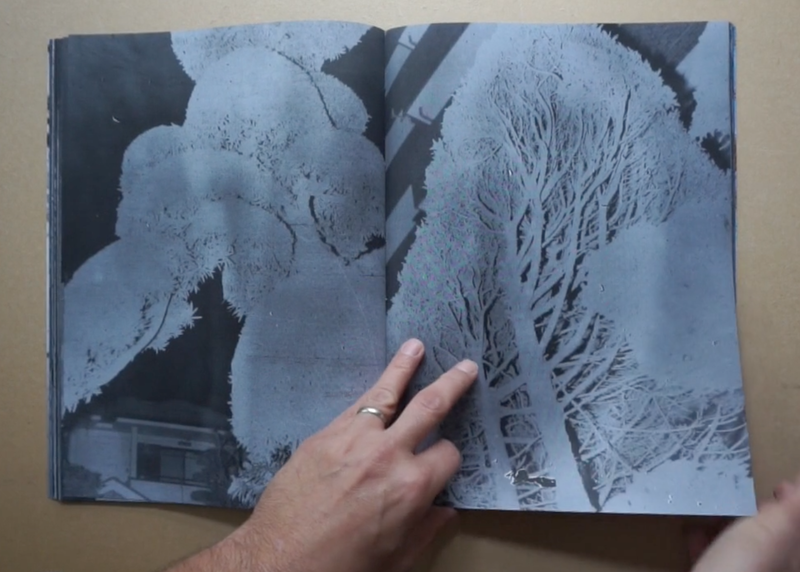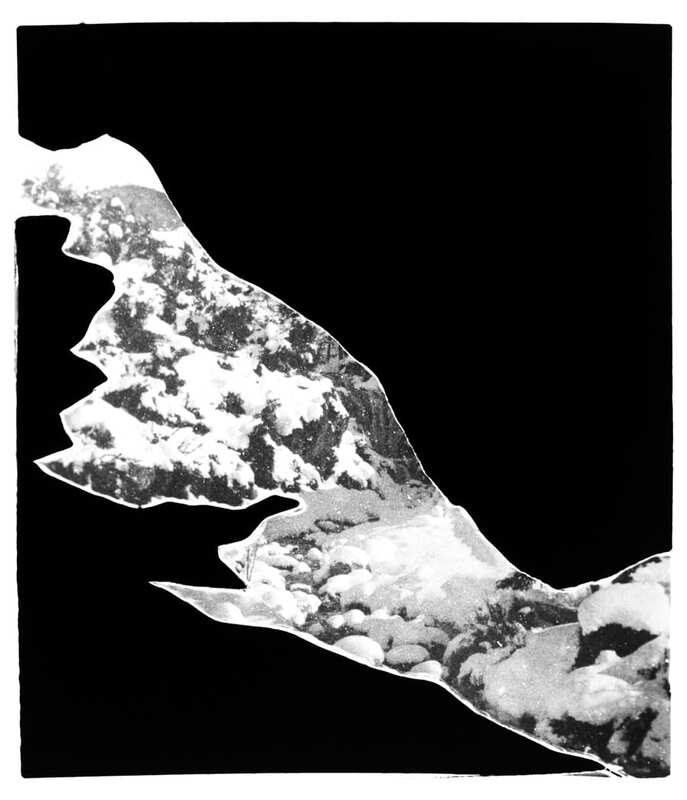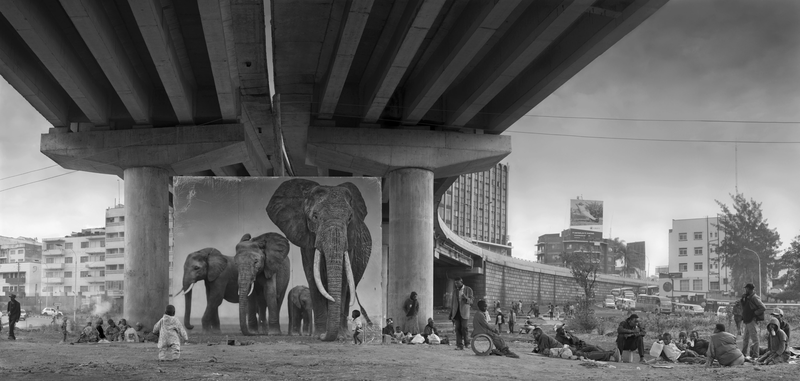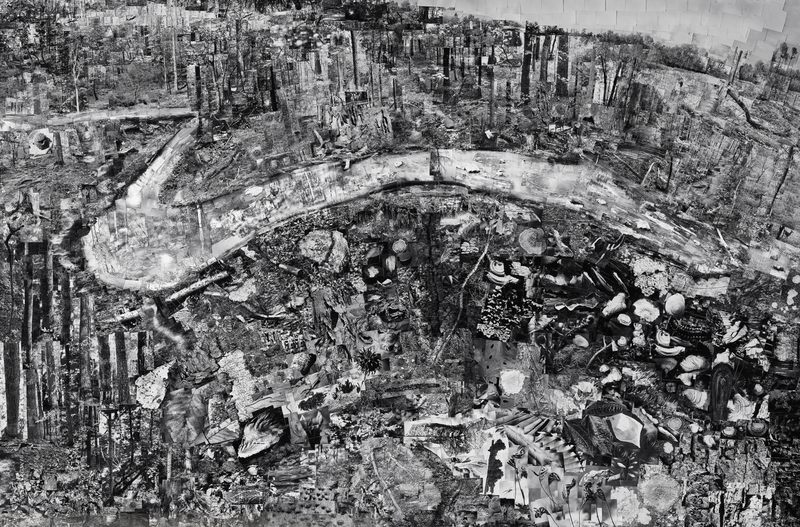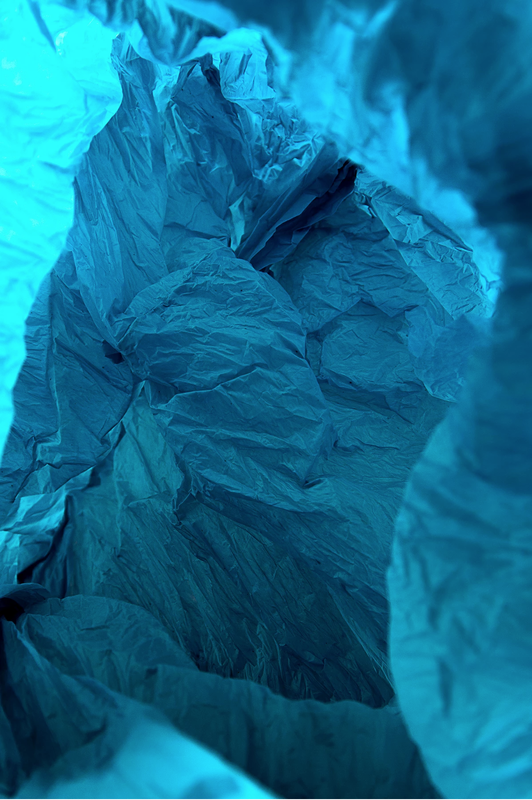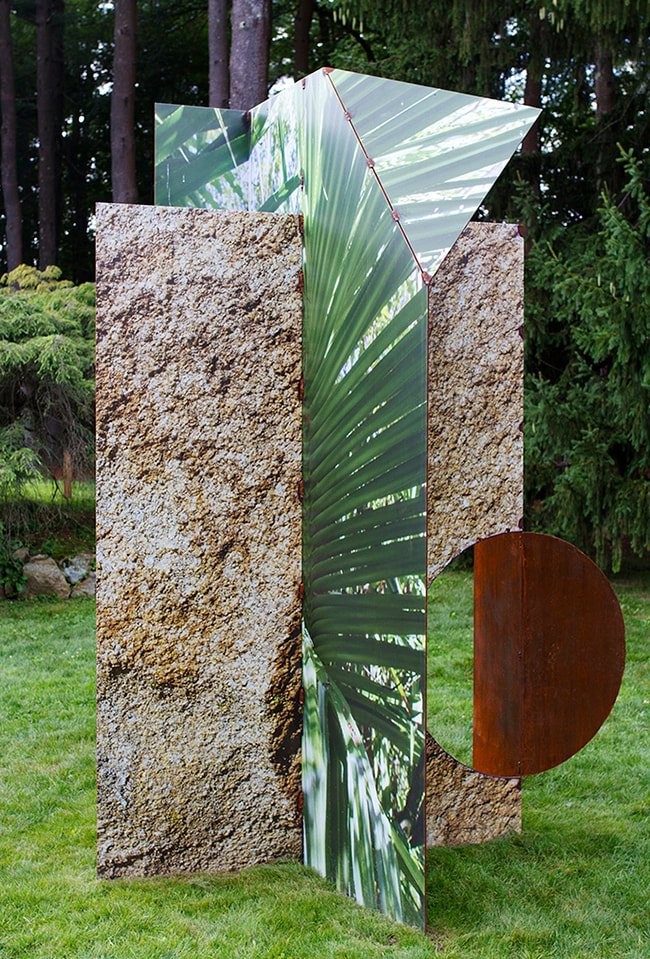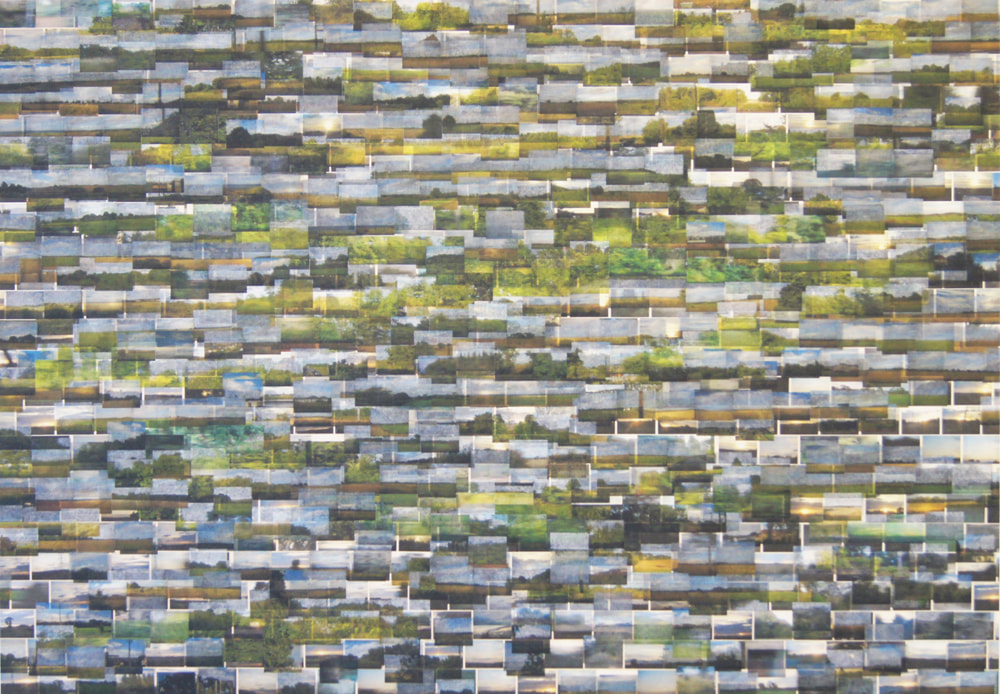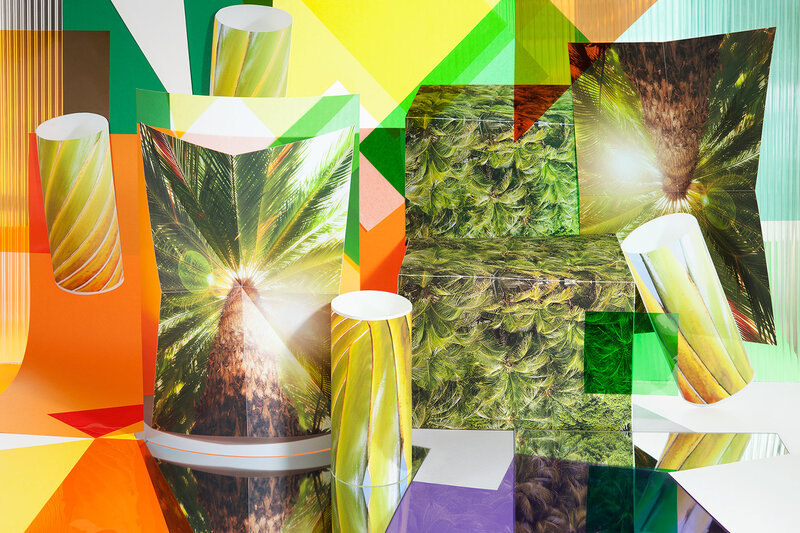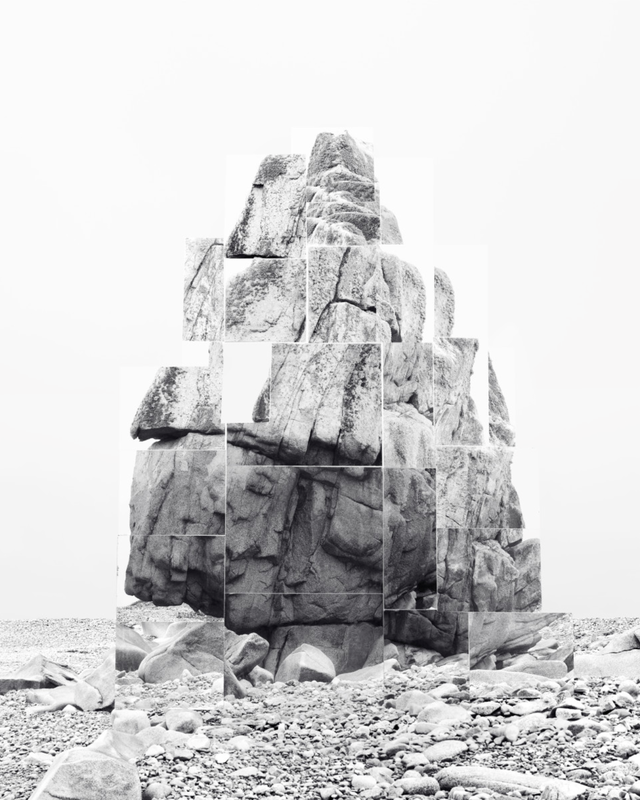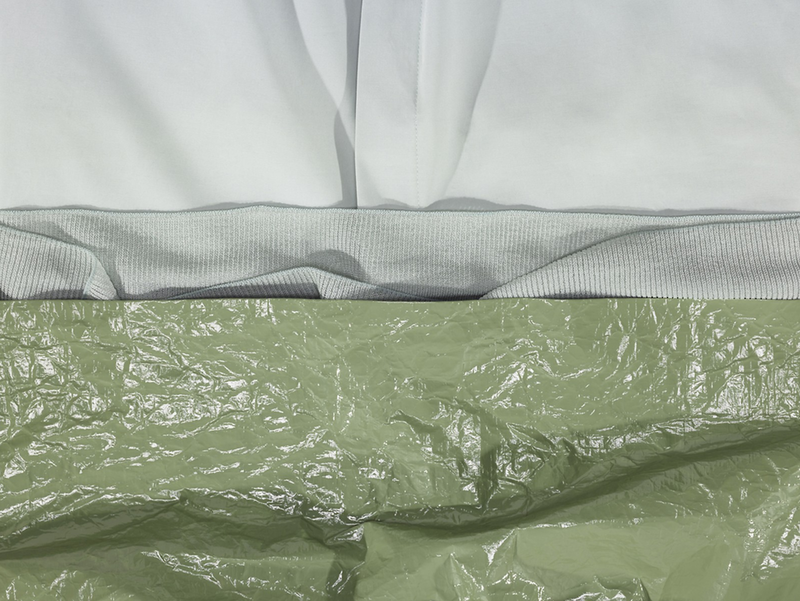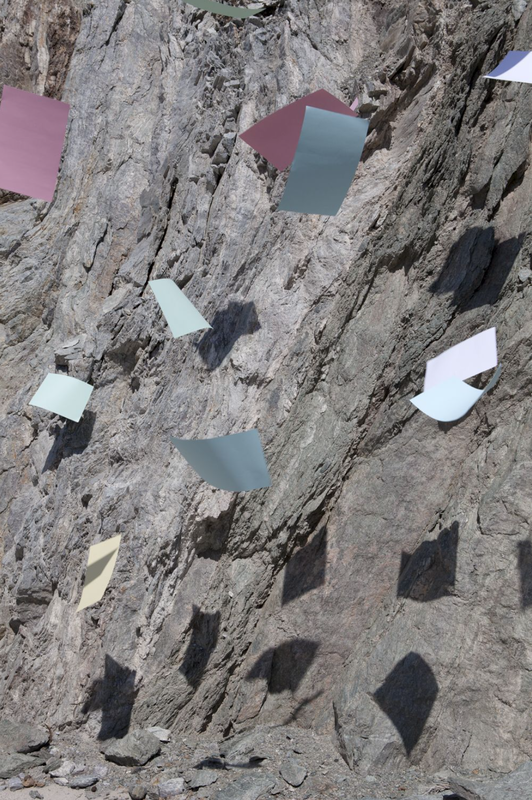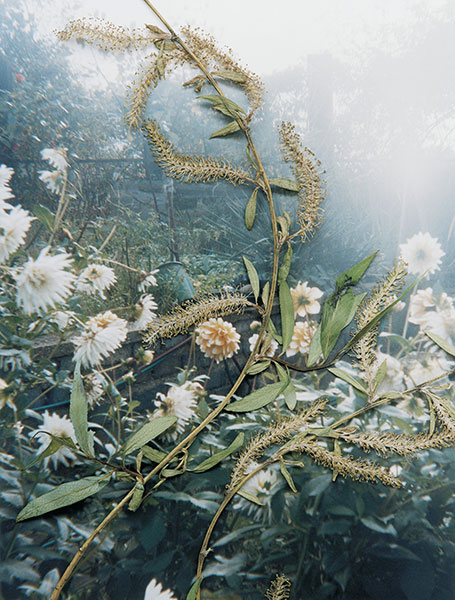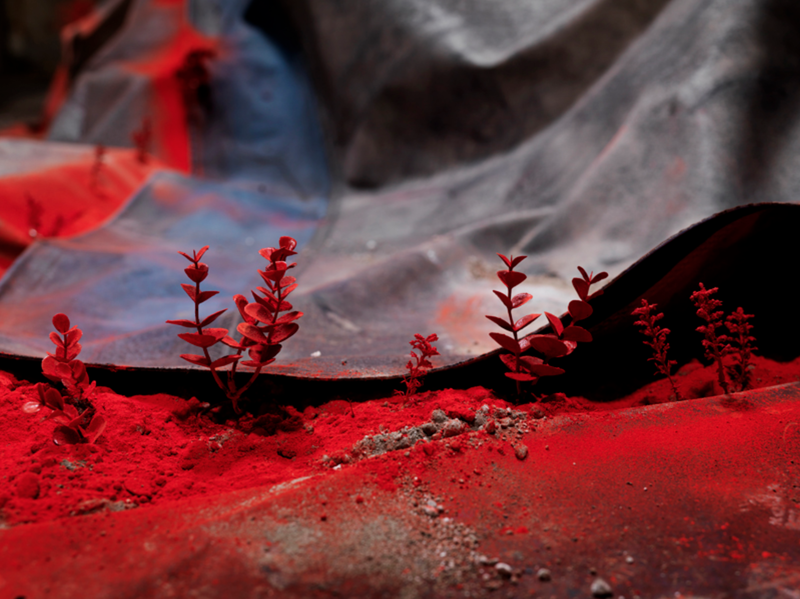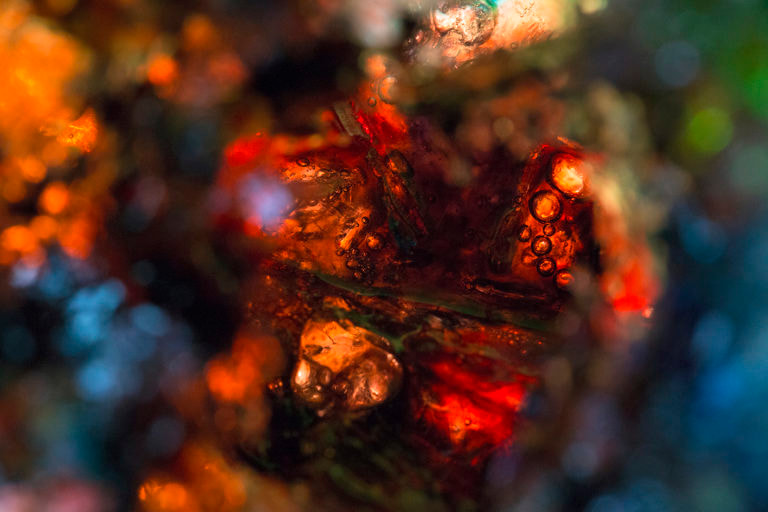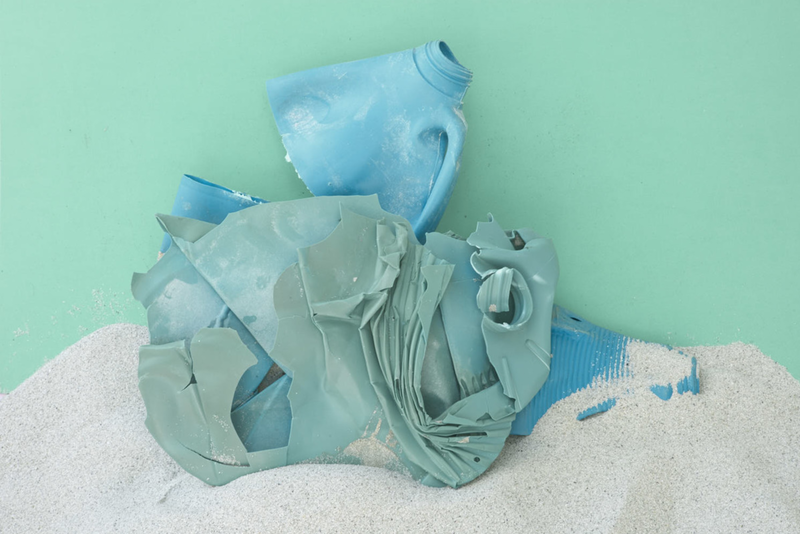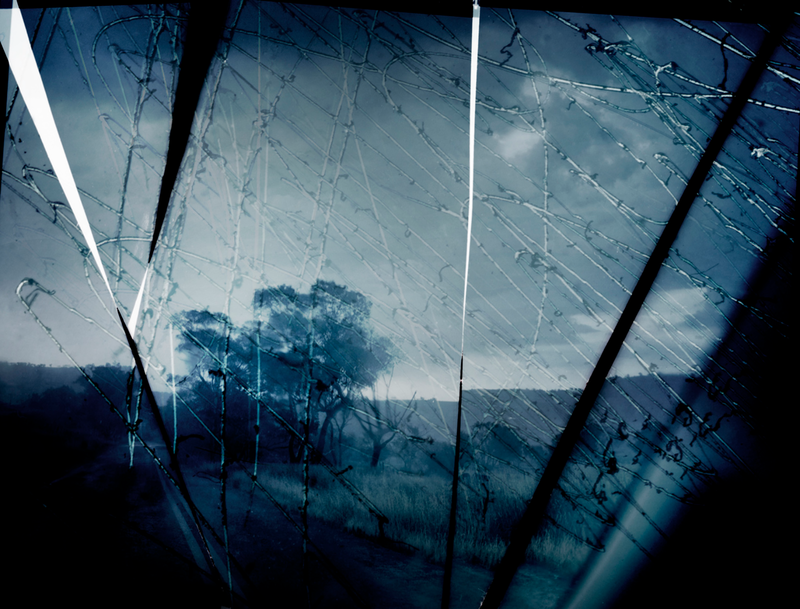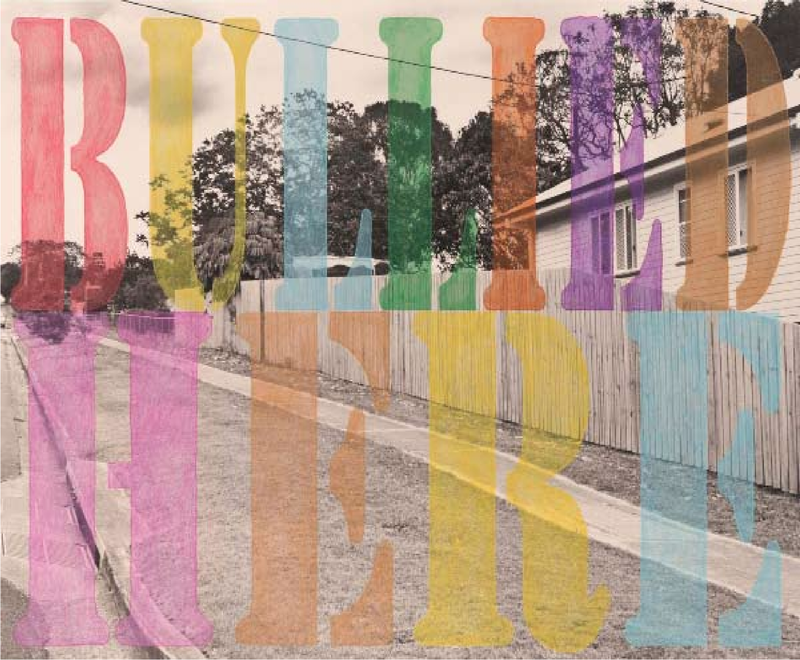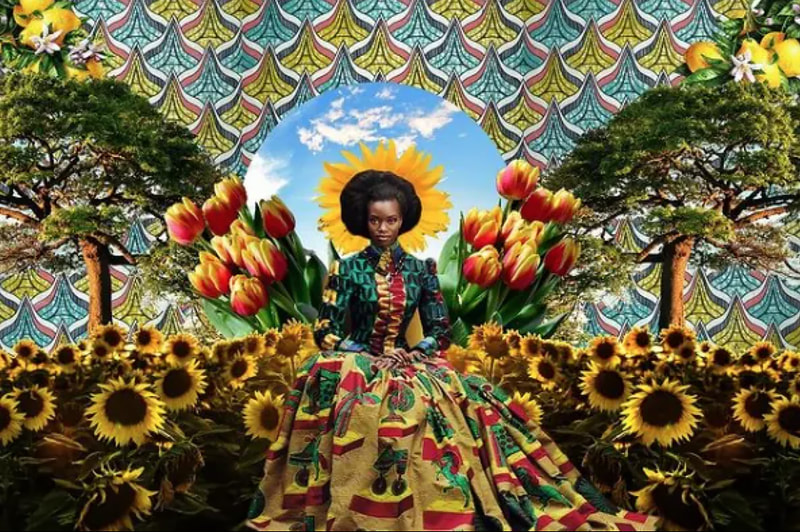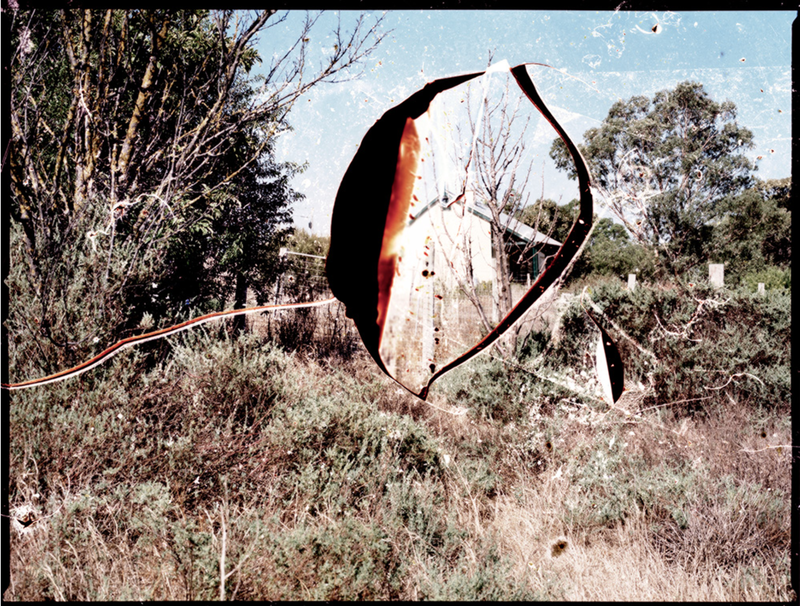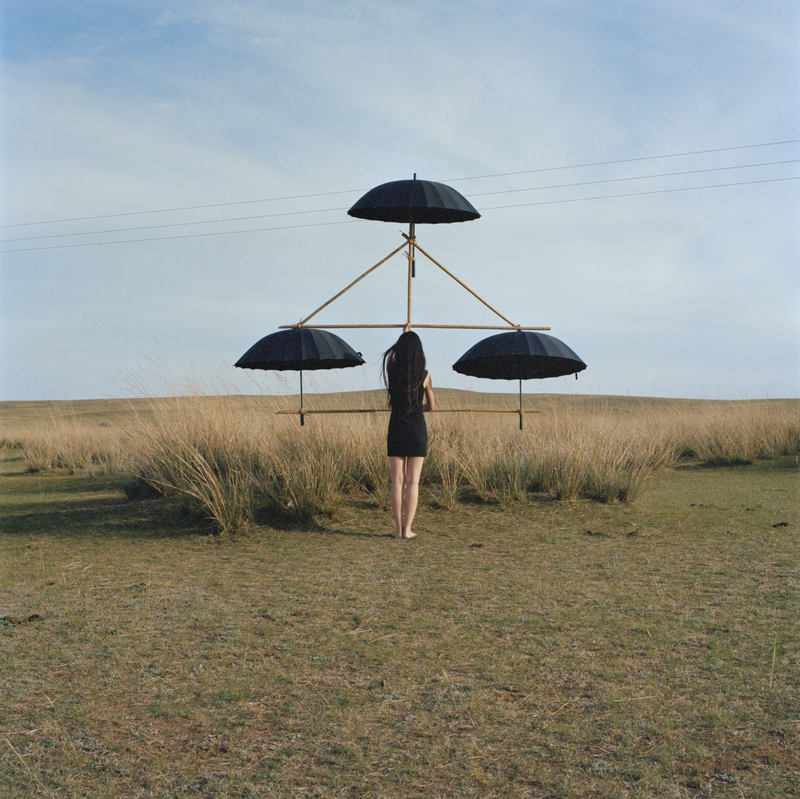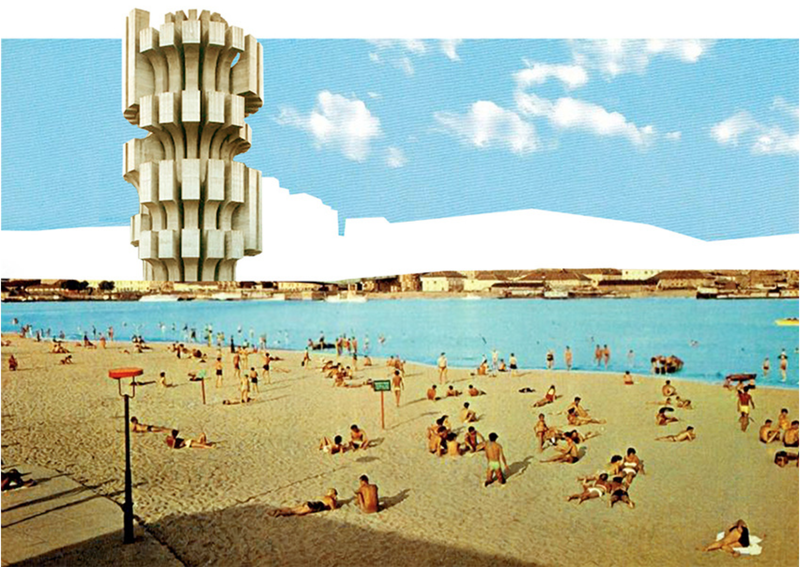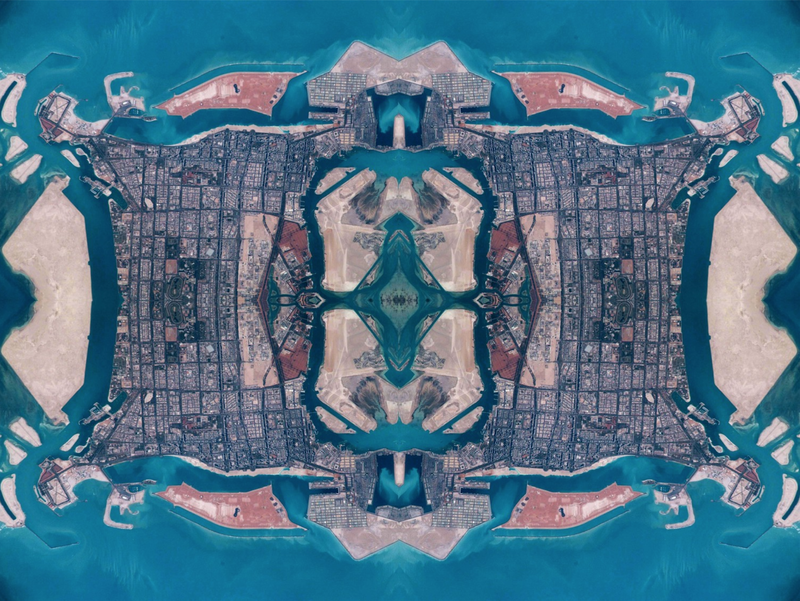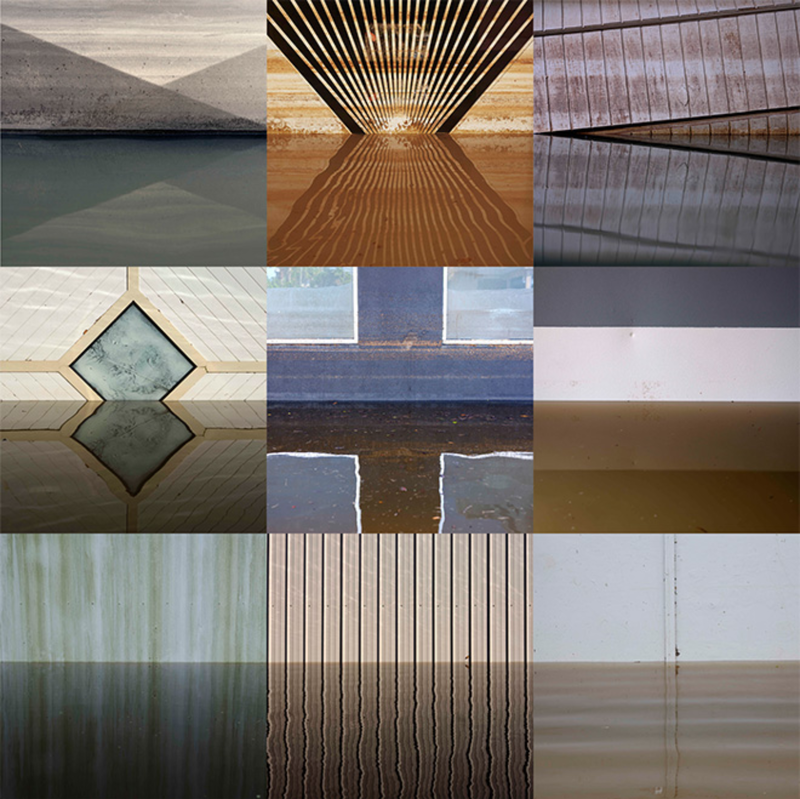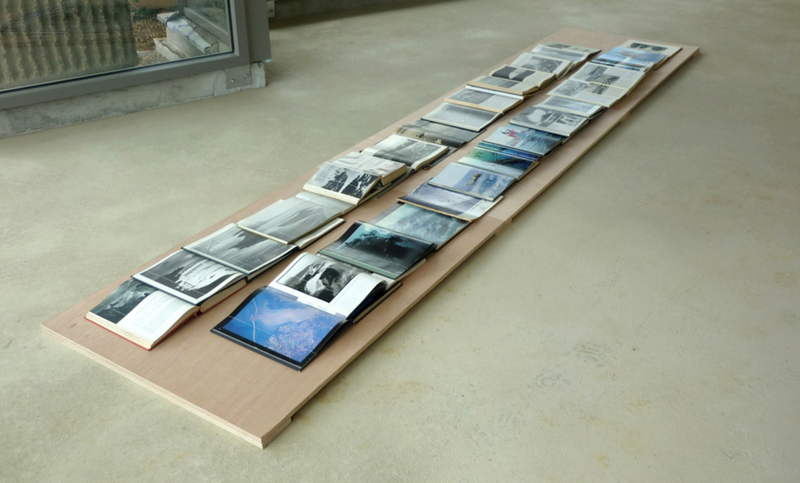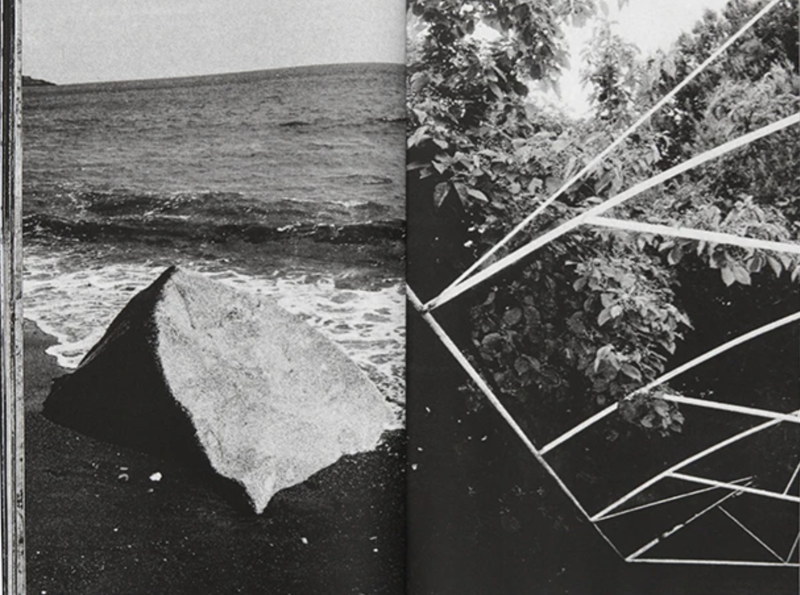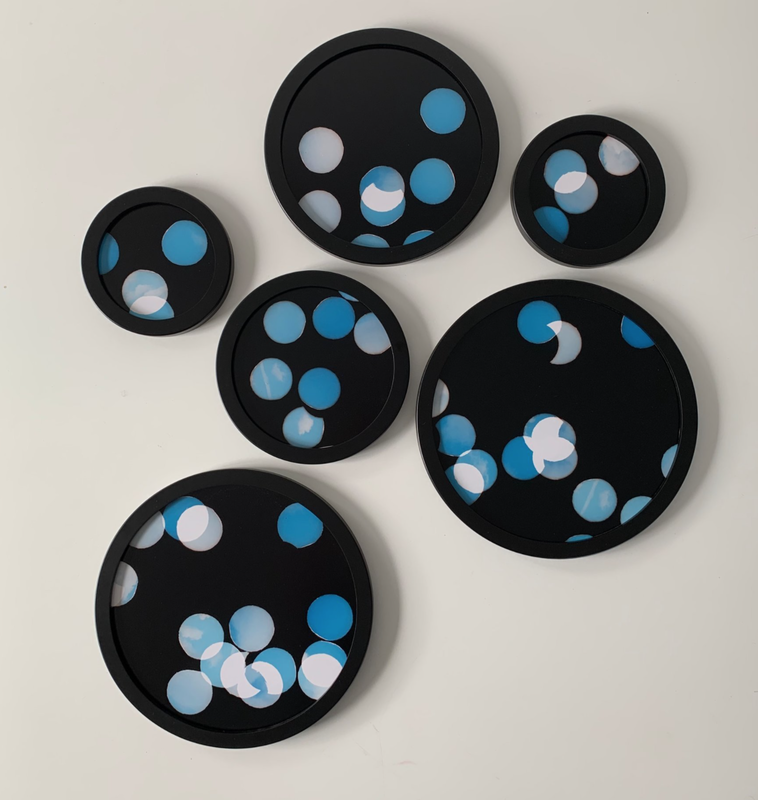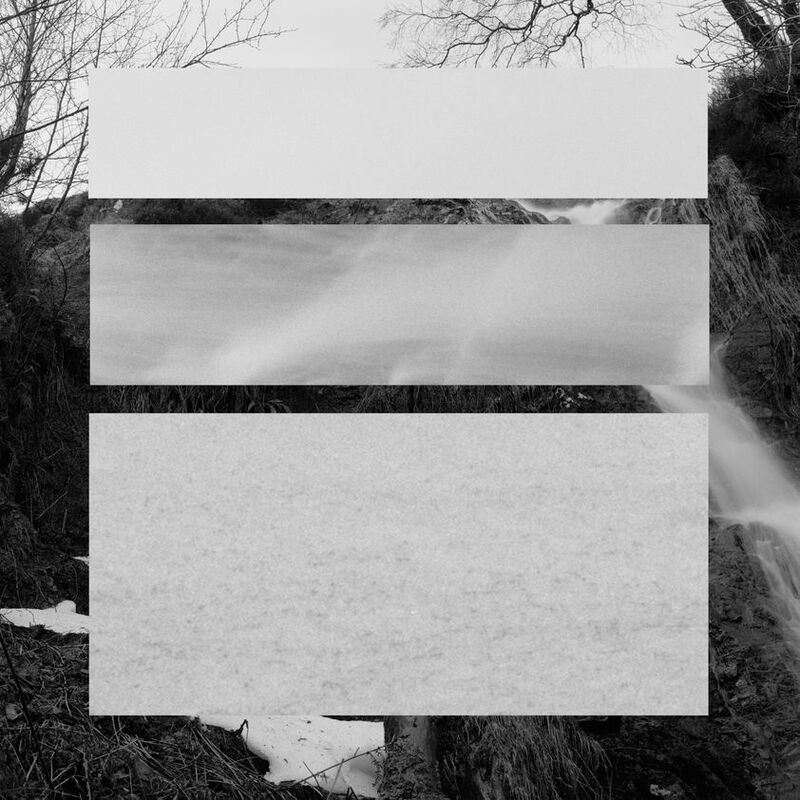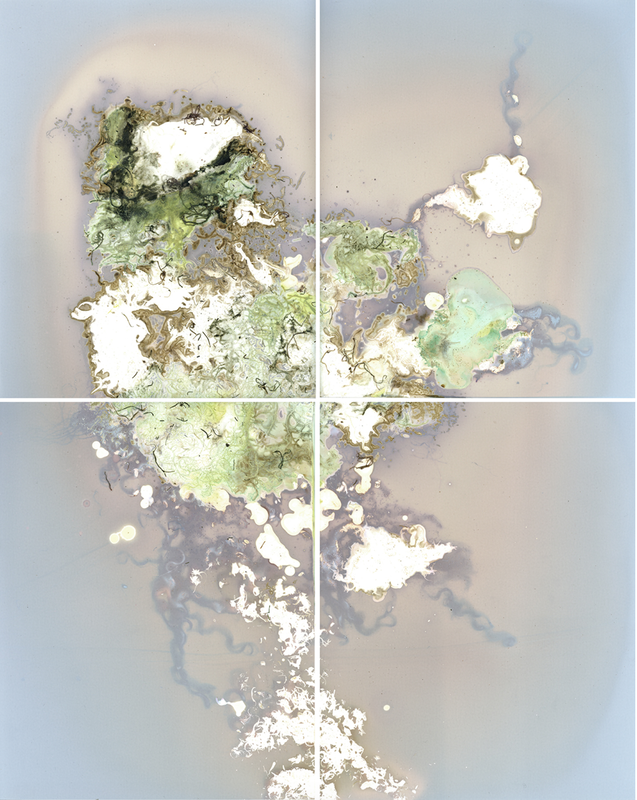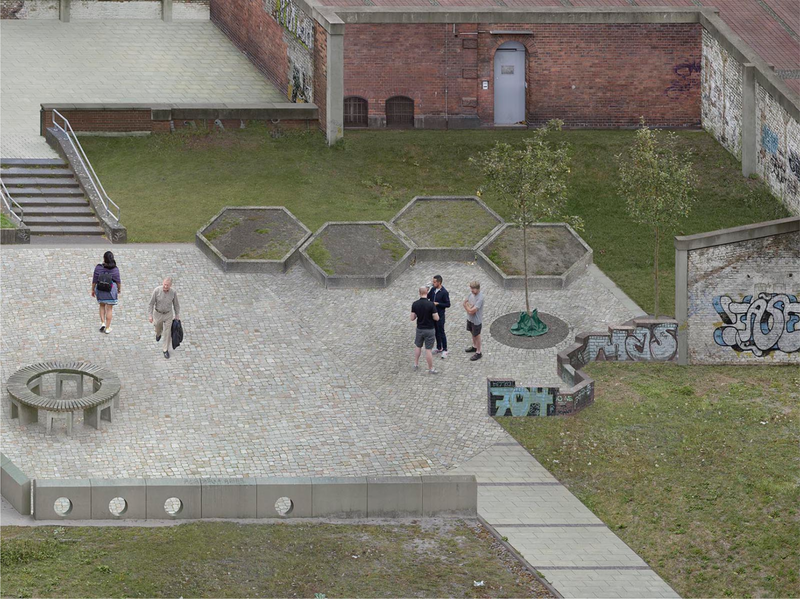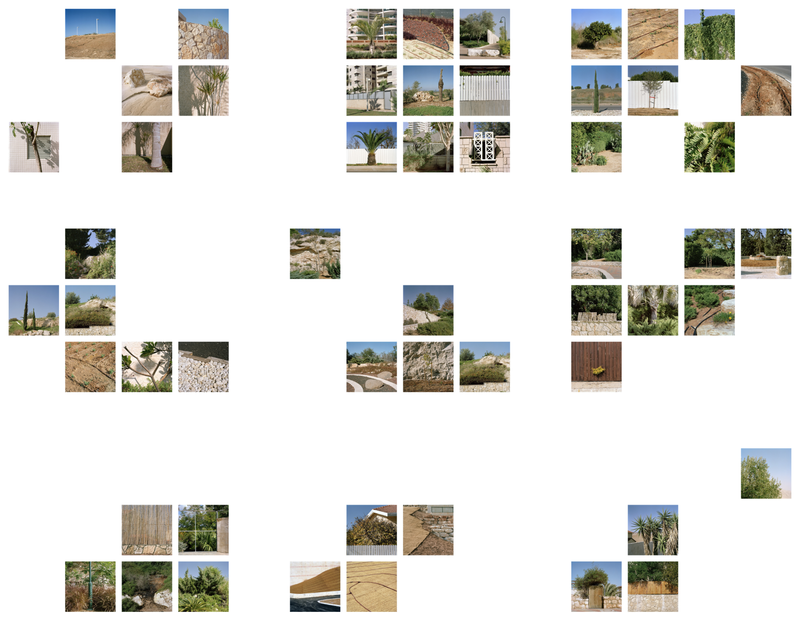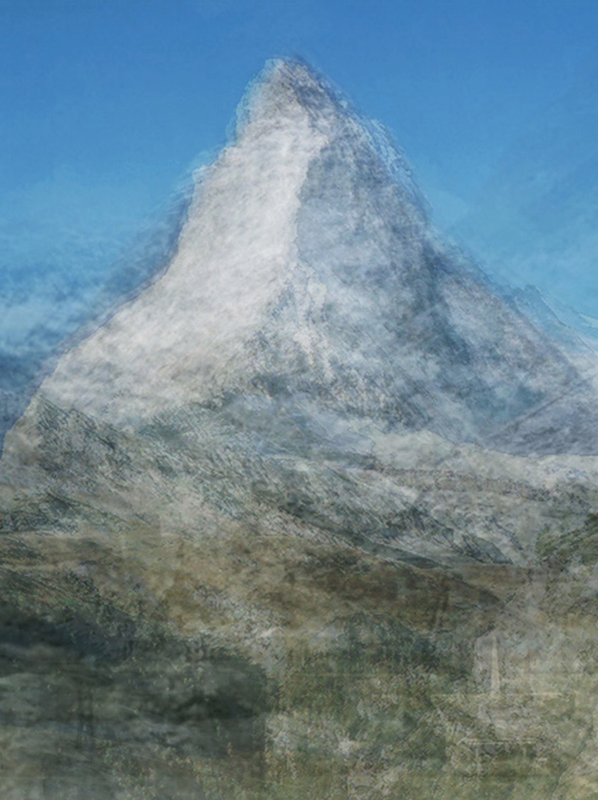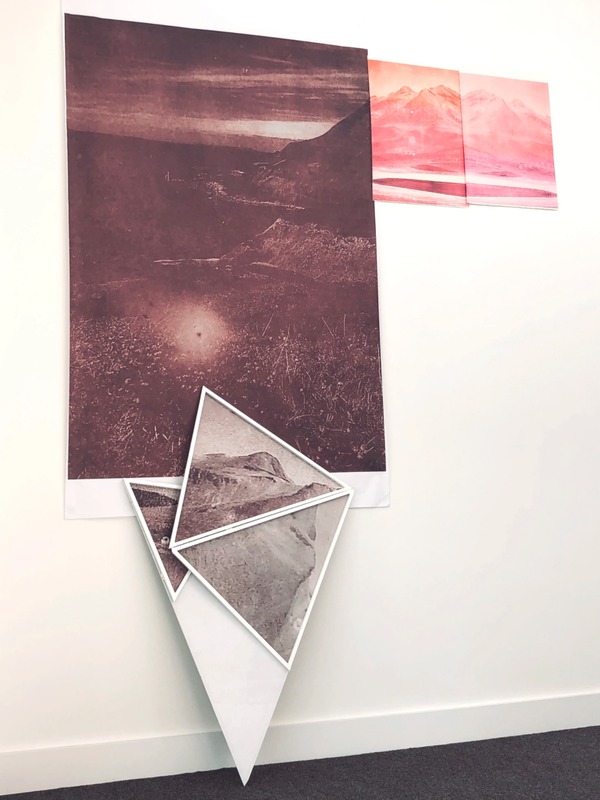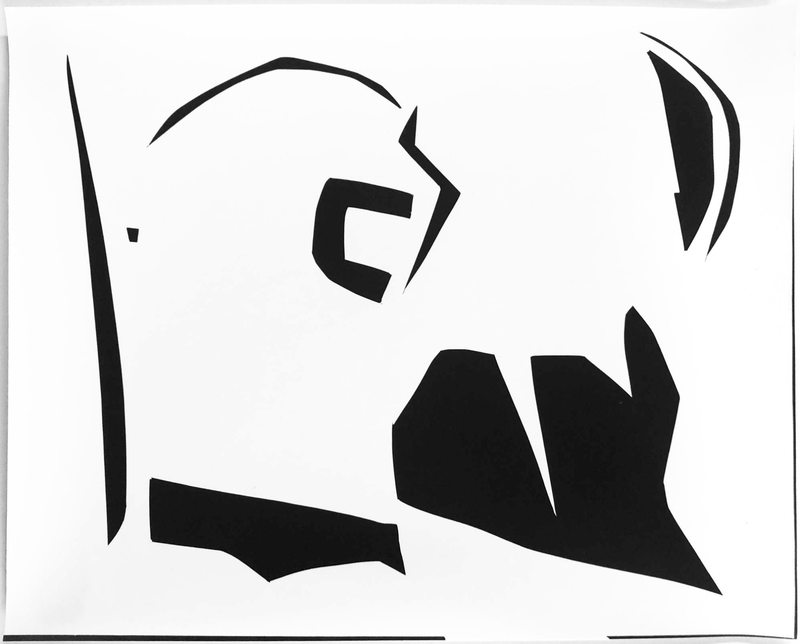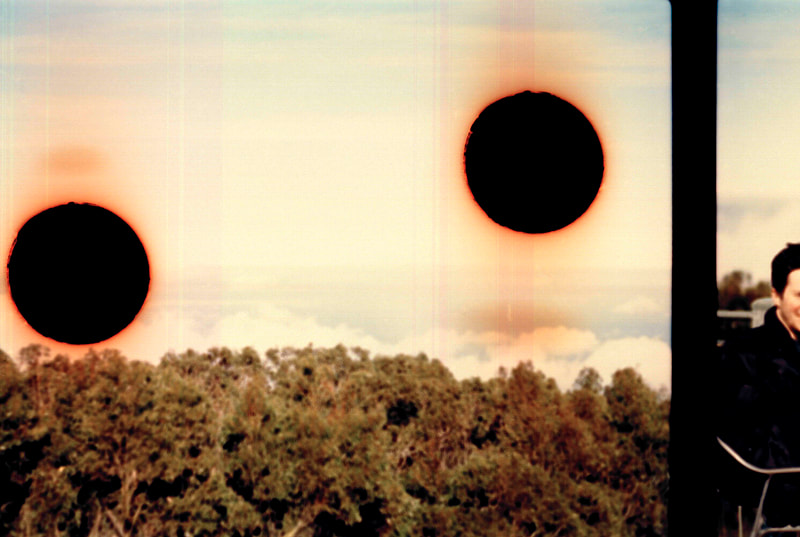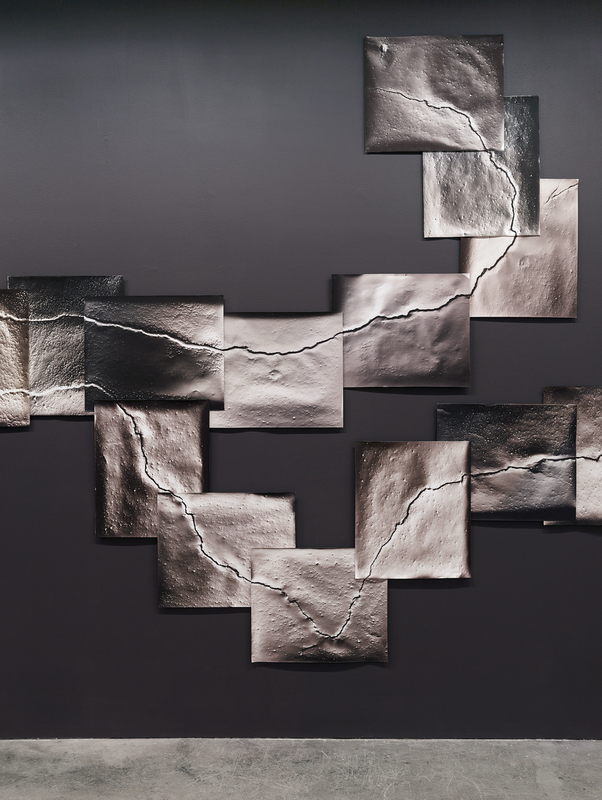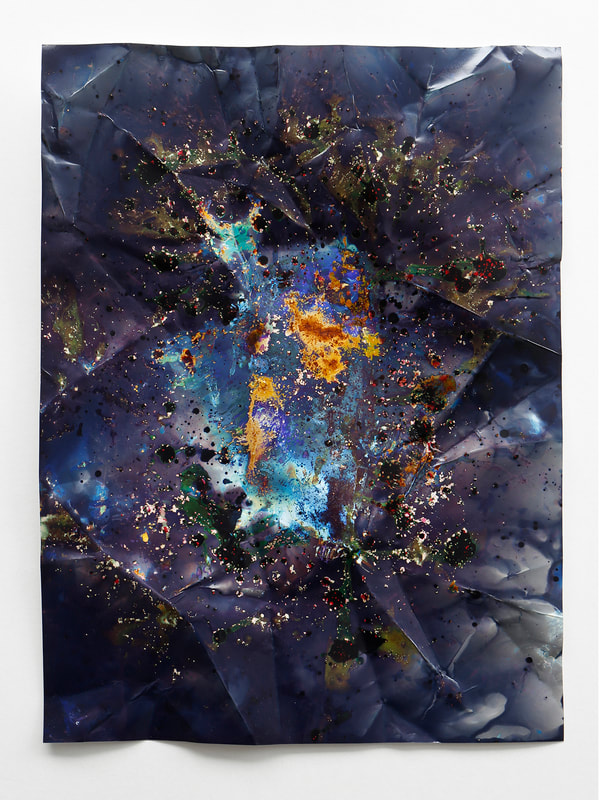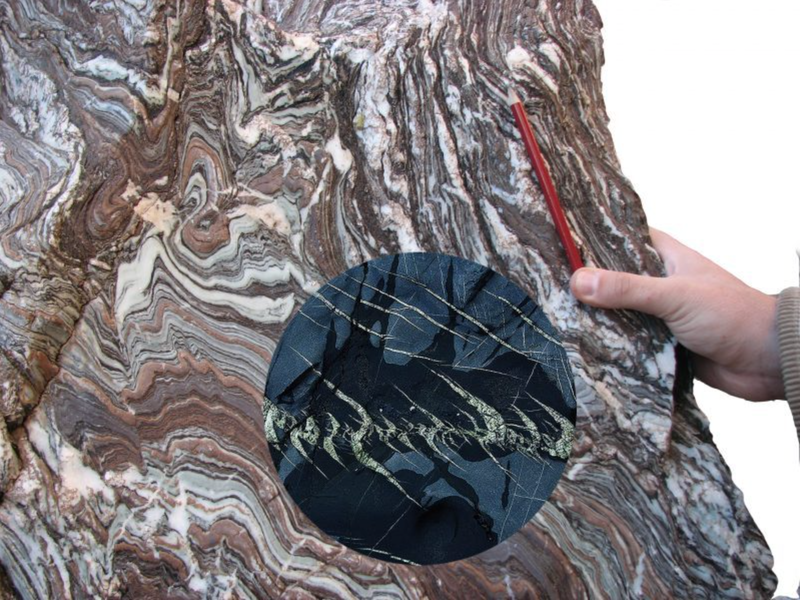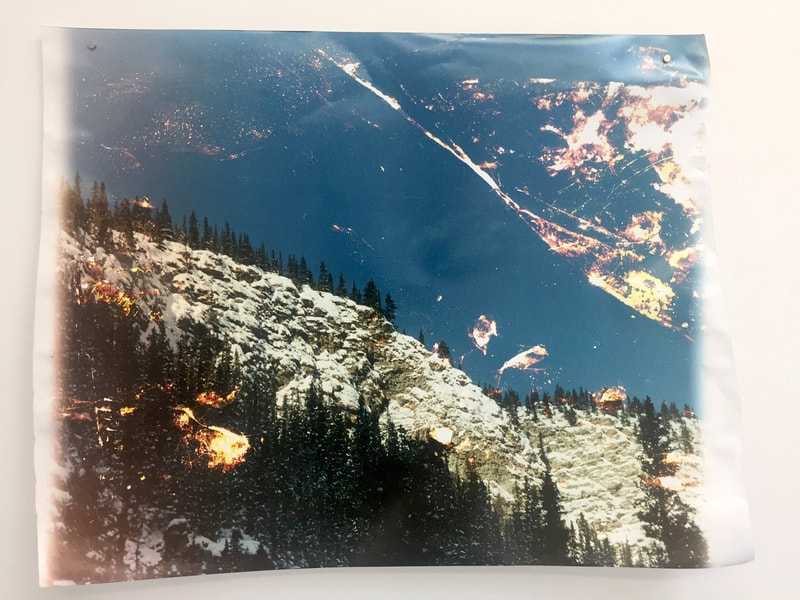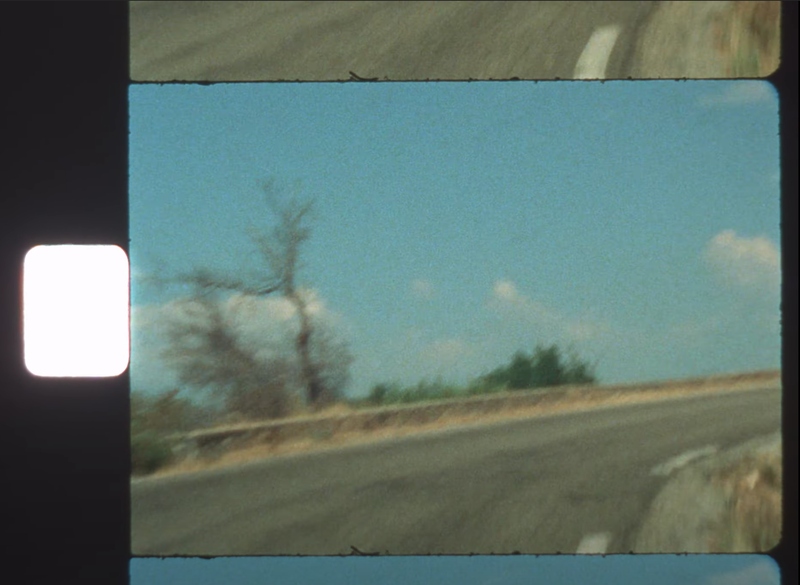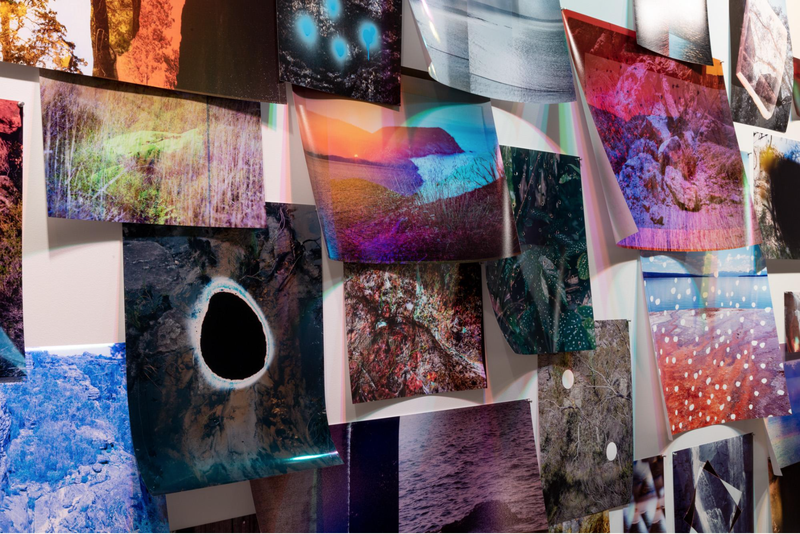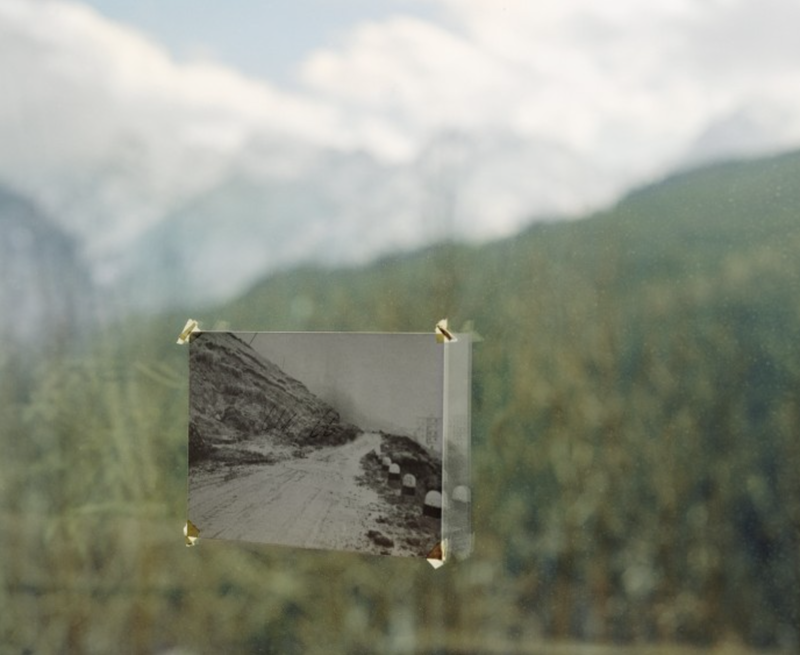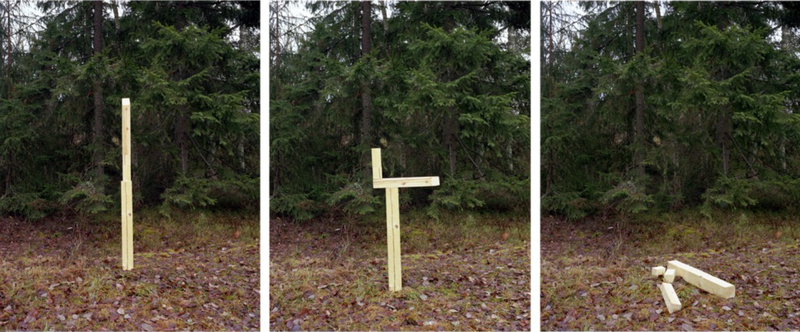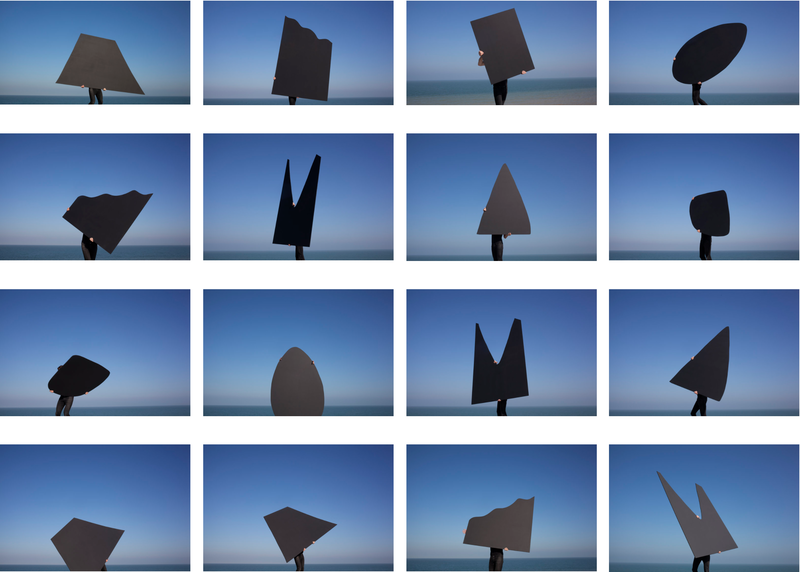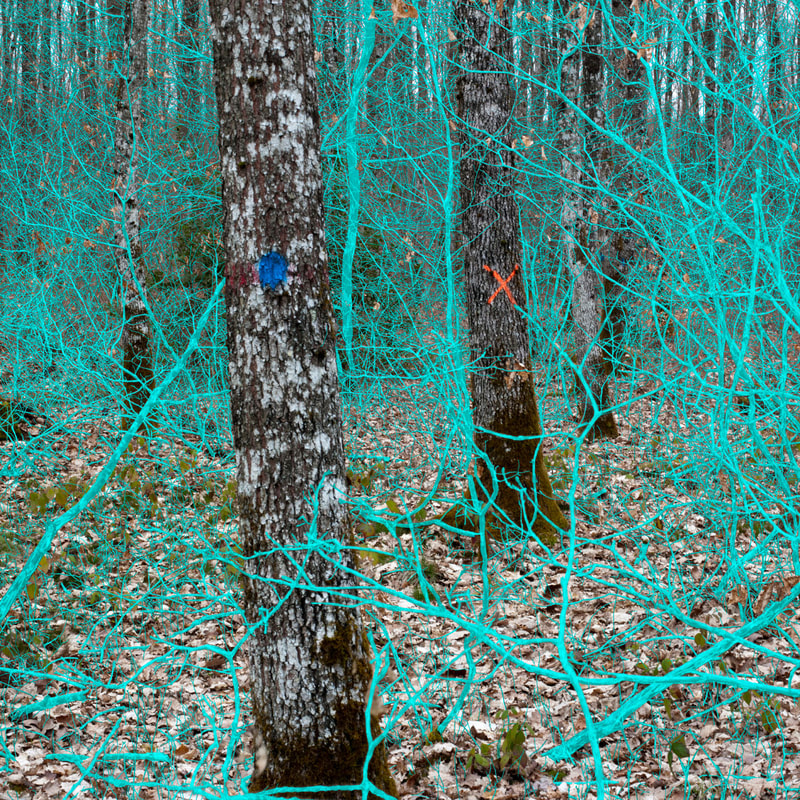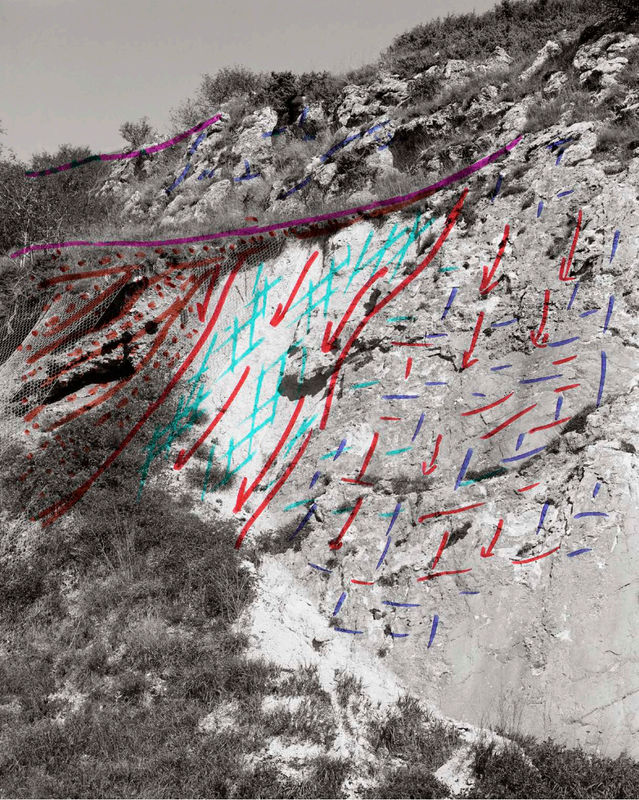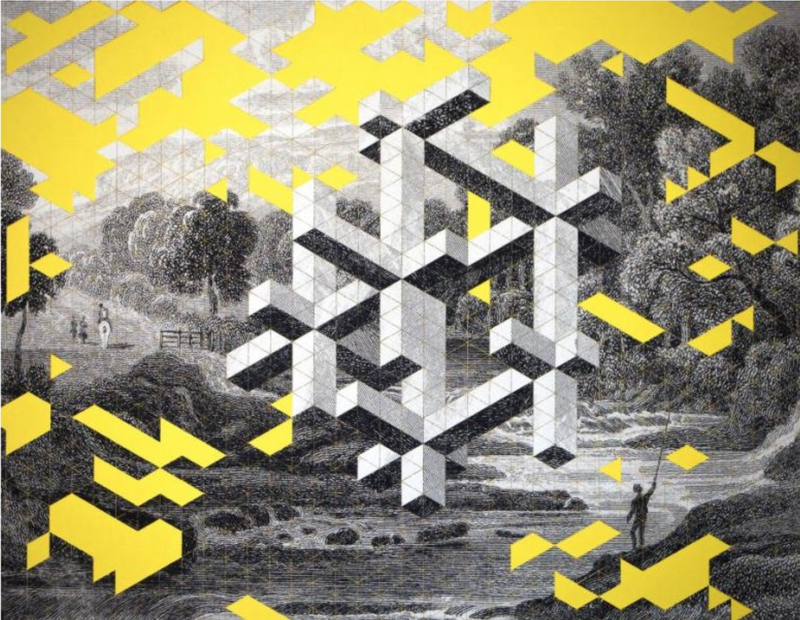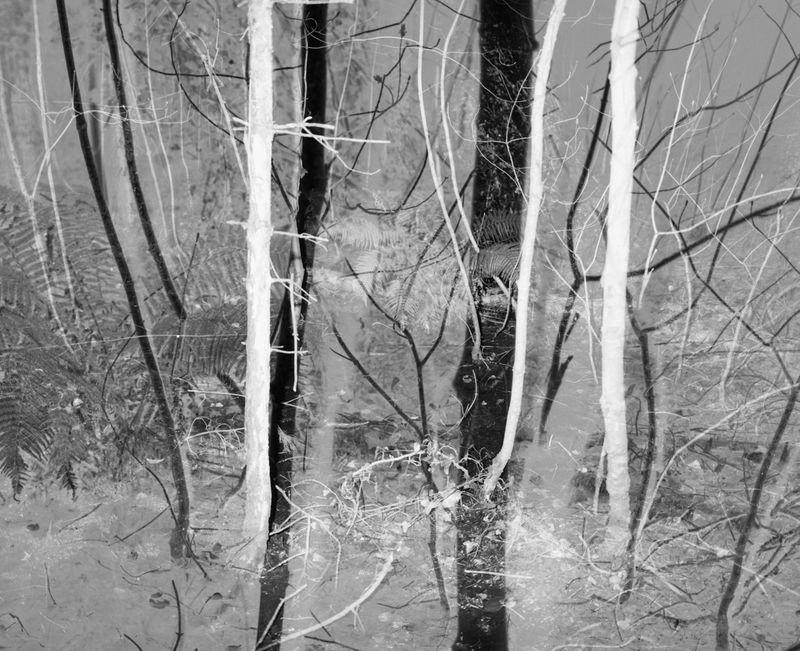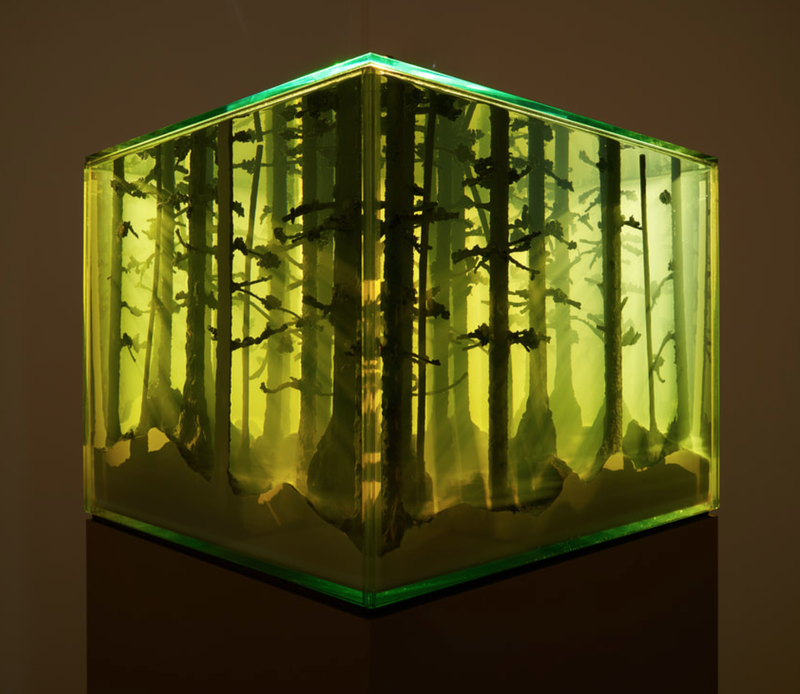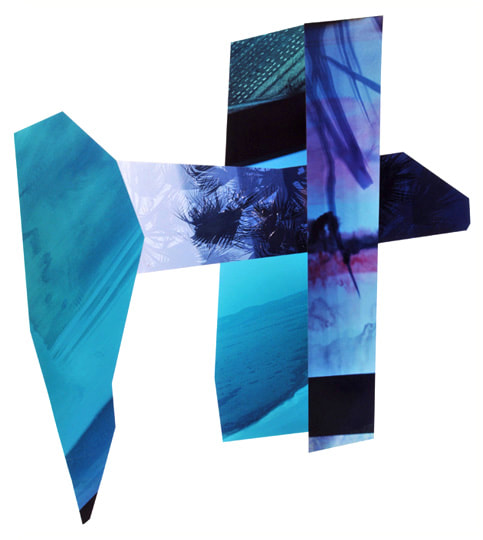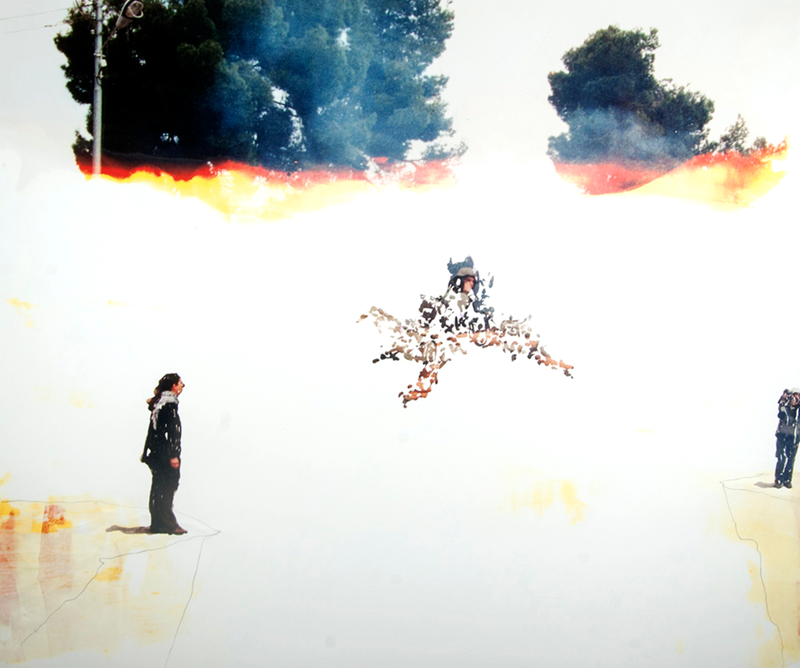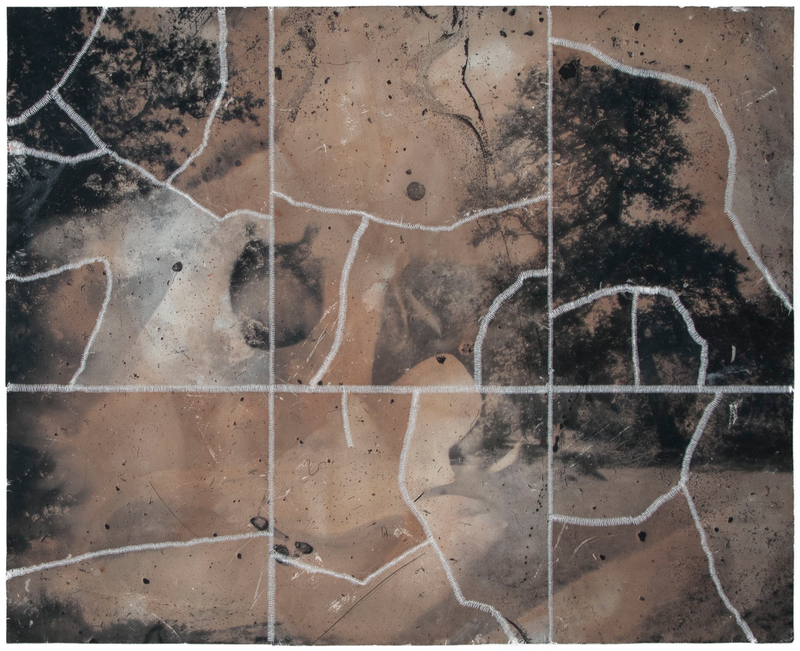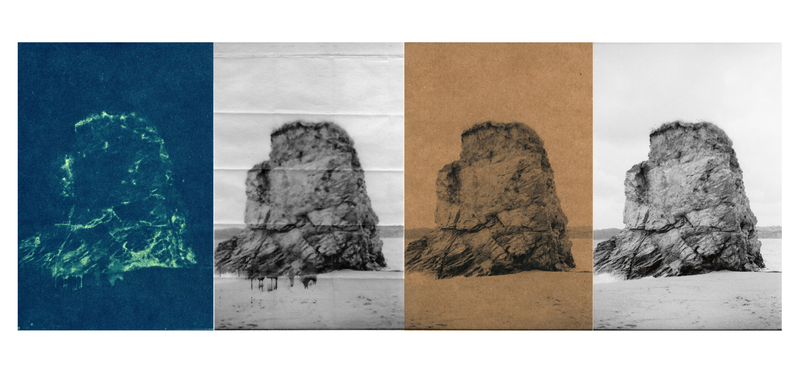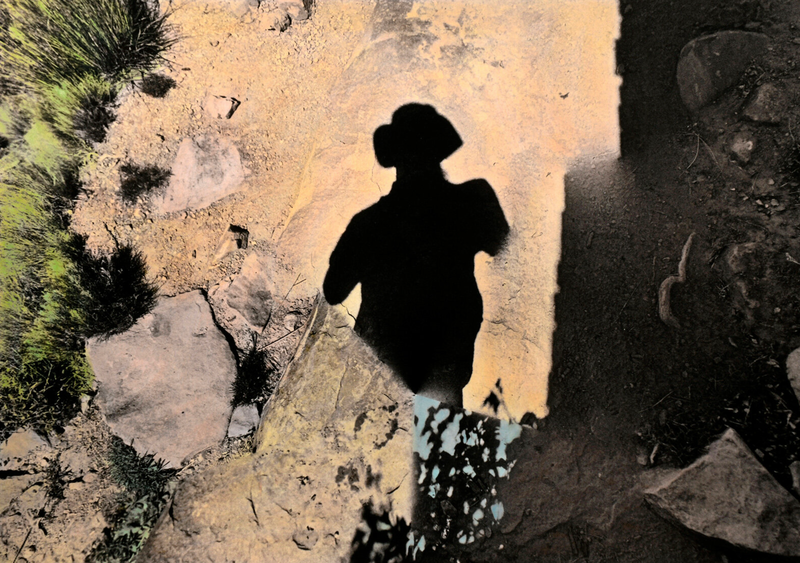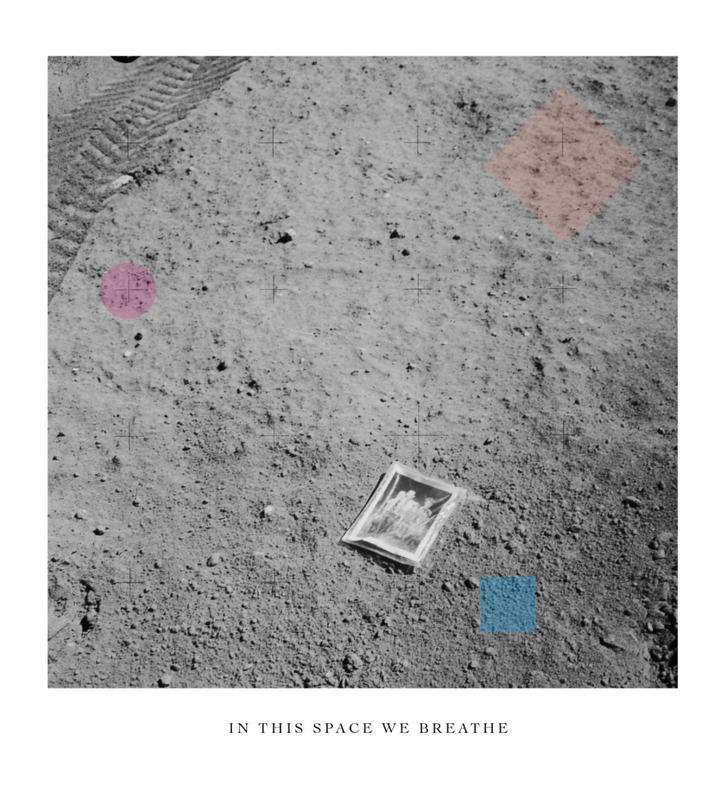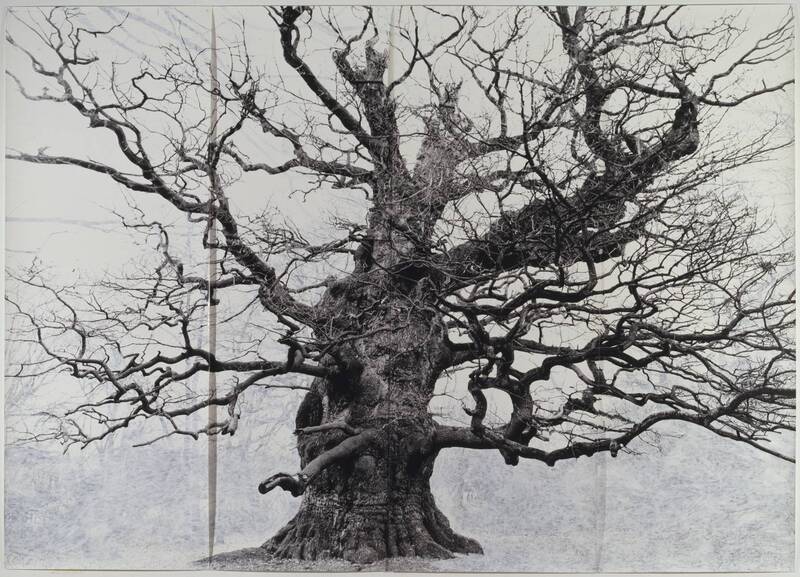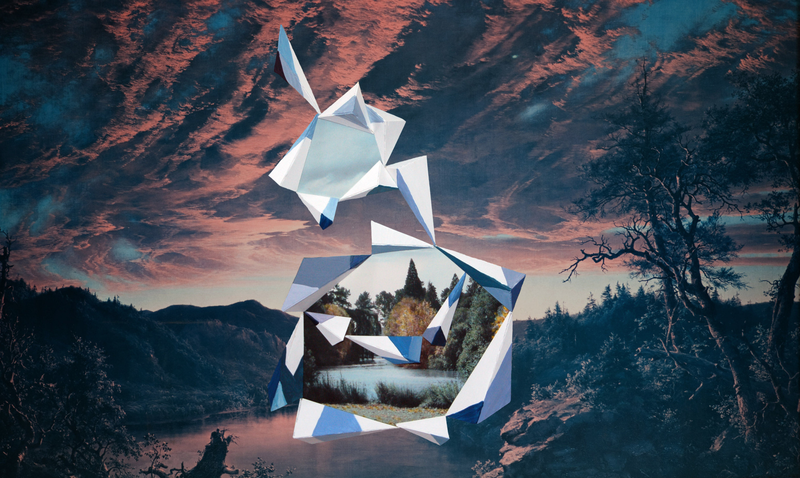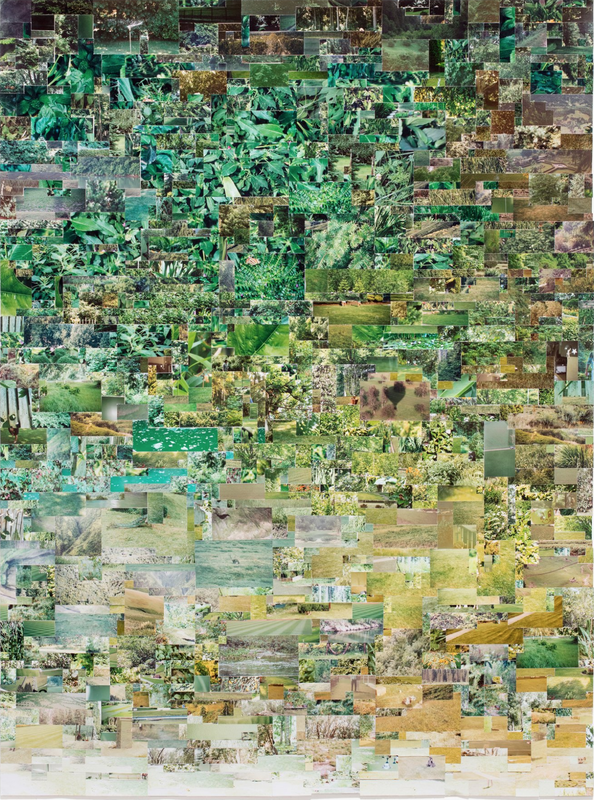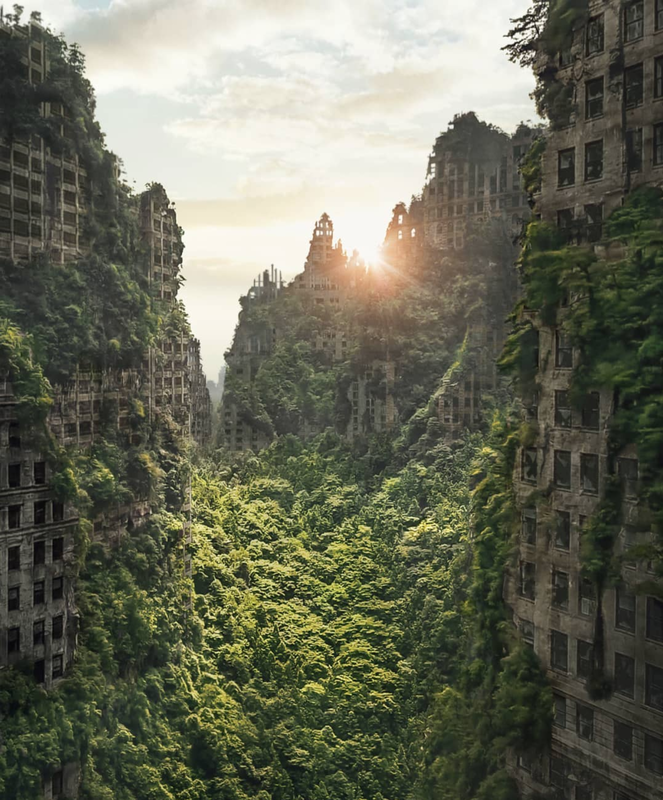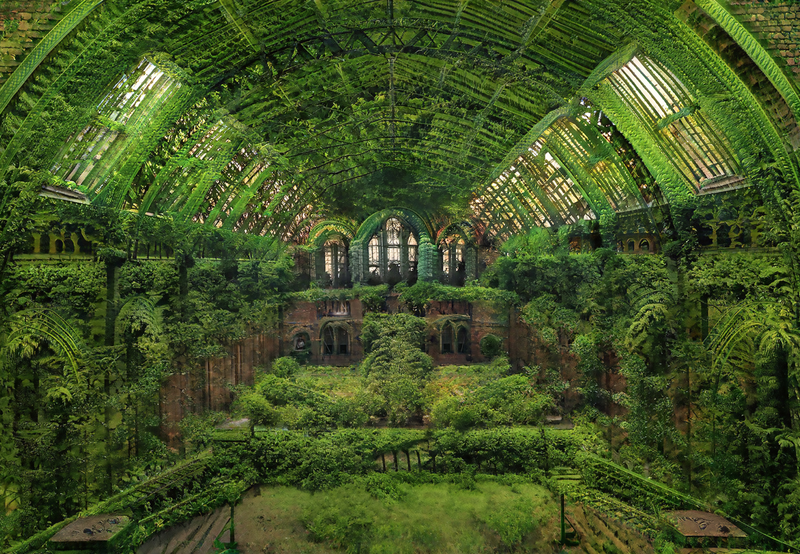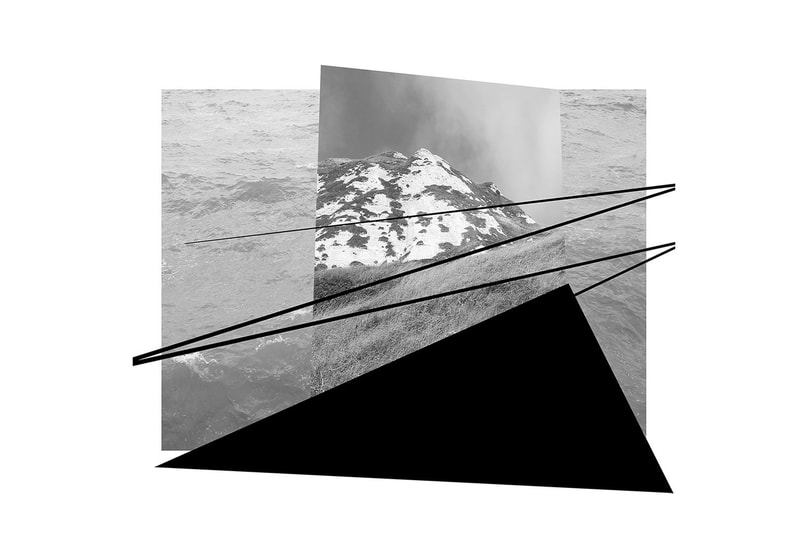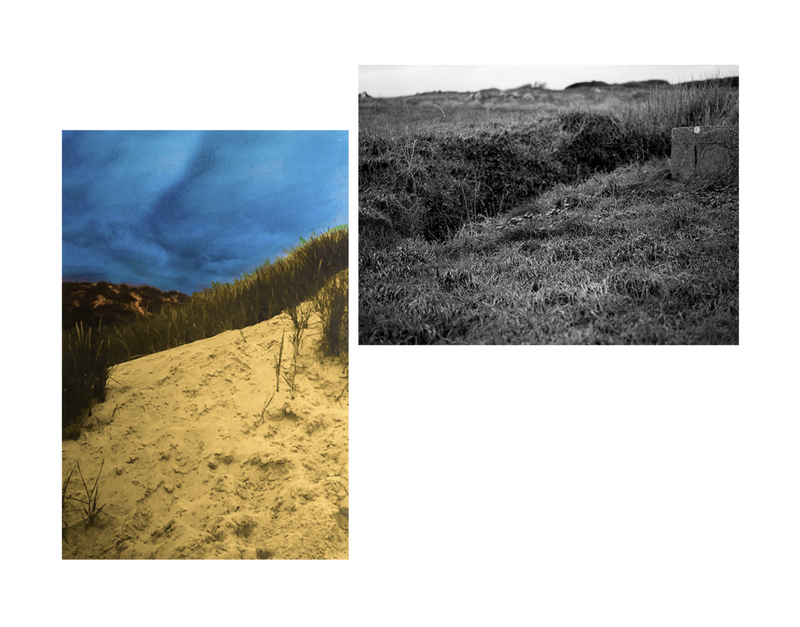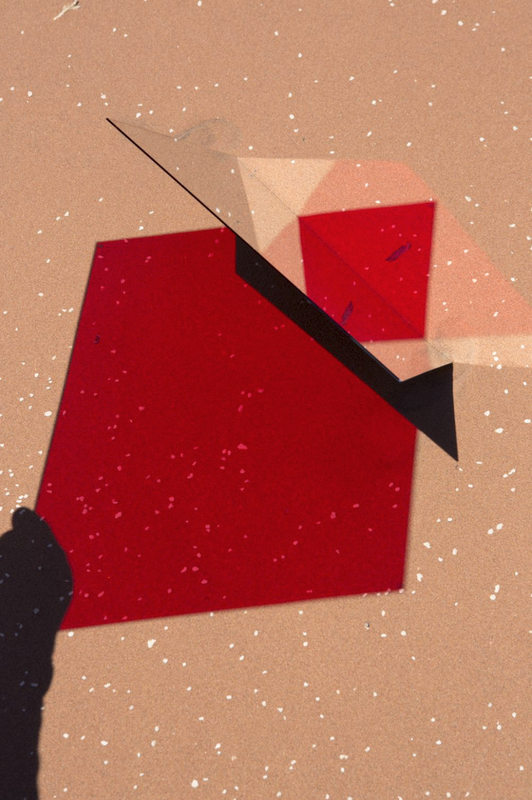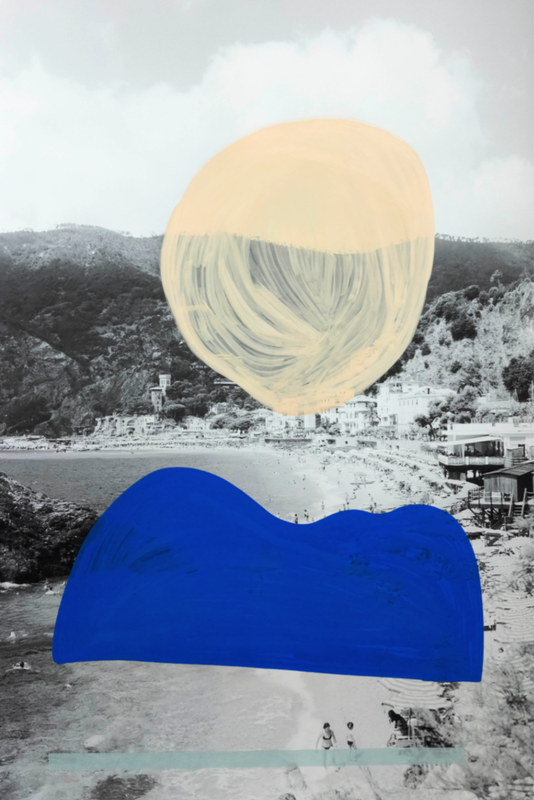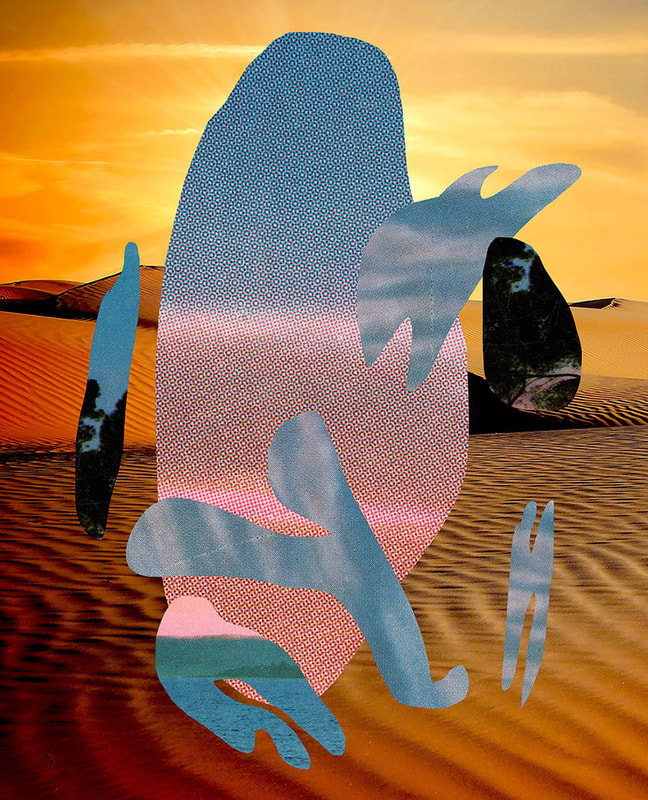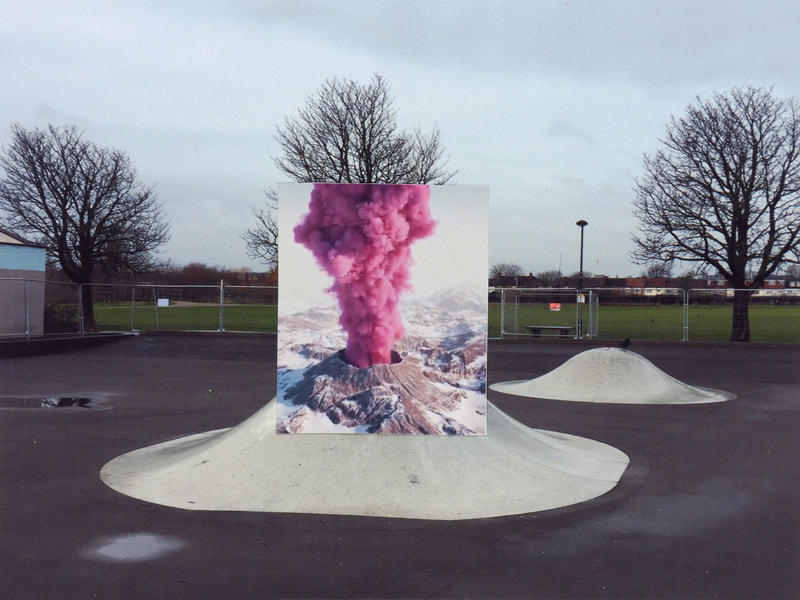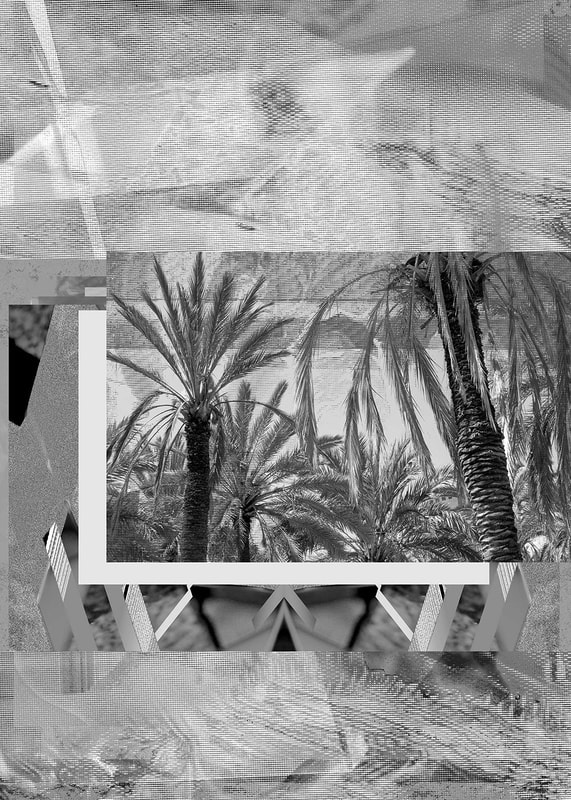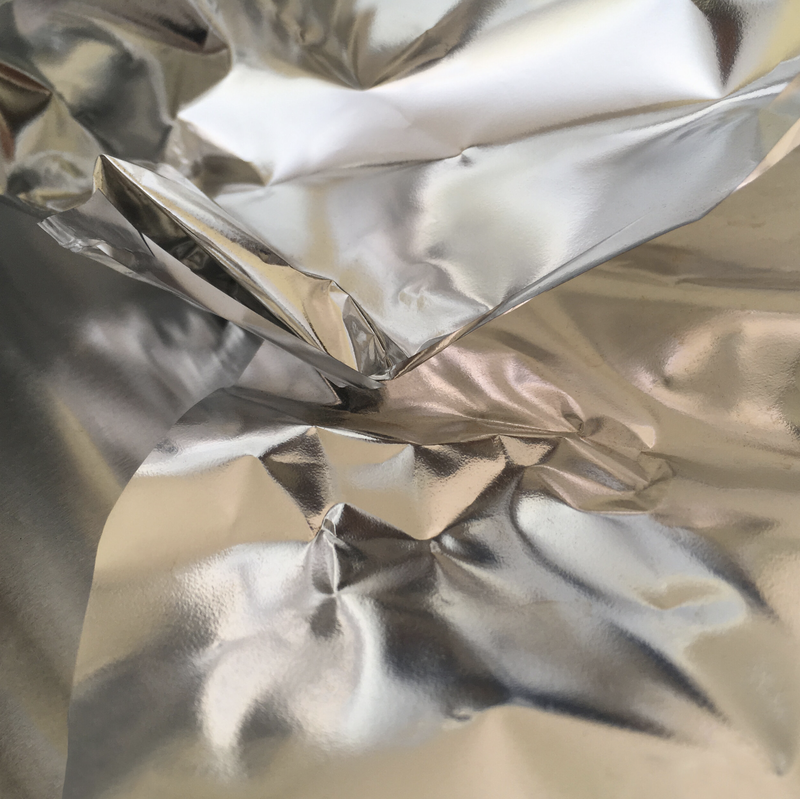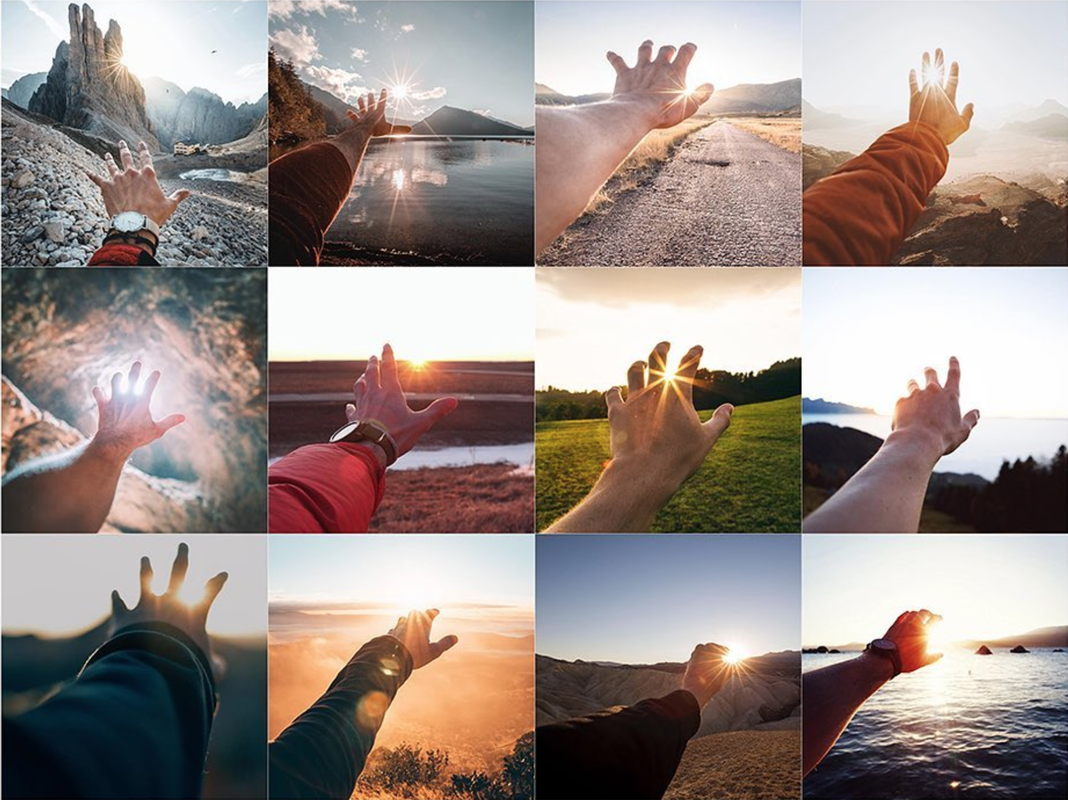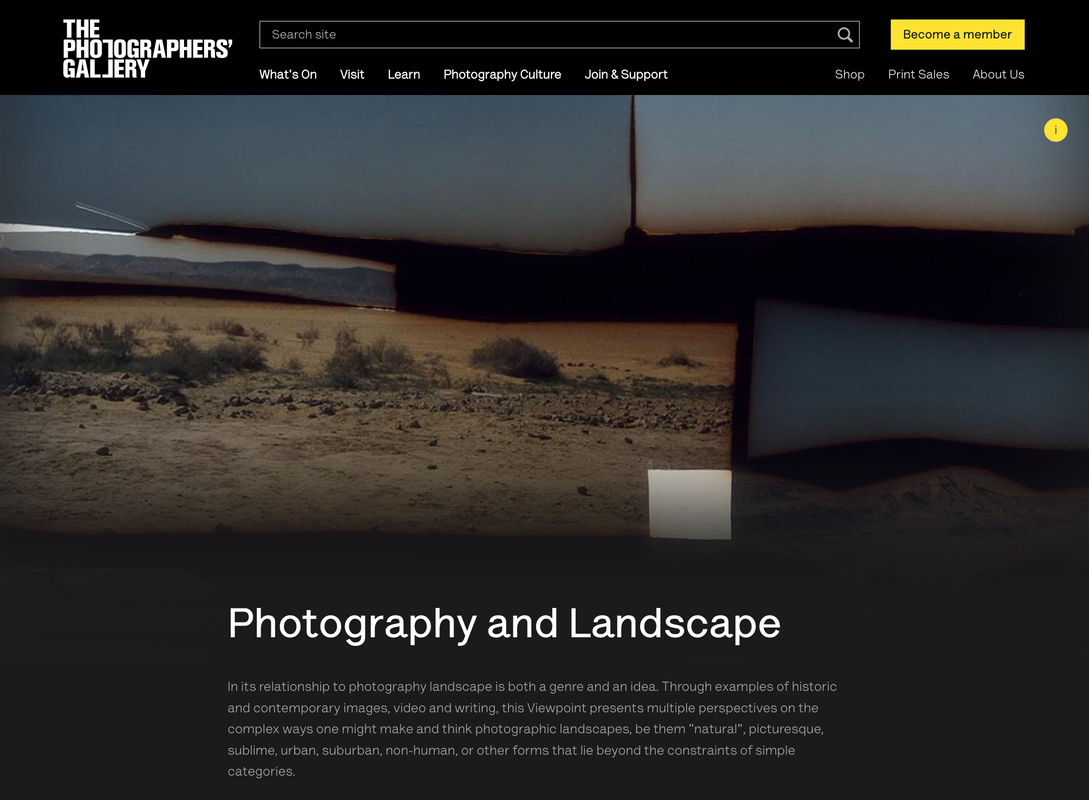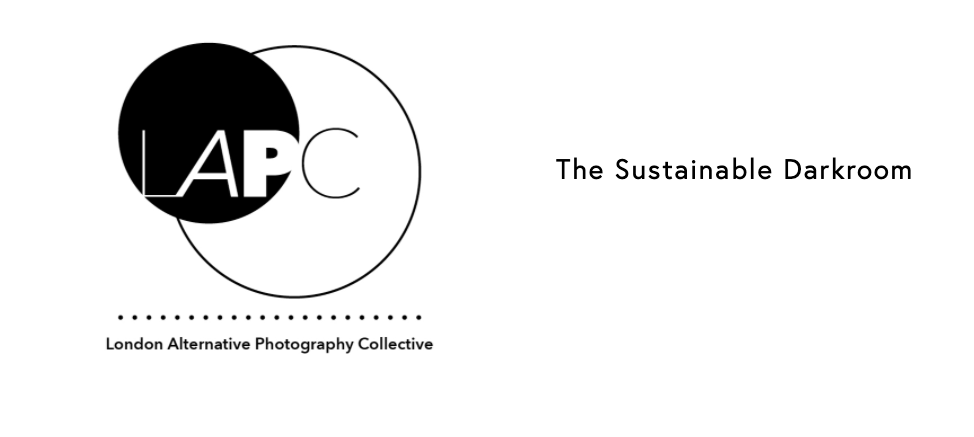KS3-4 resource:
How have photographers constructed landscape images? What can they tell us about our relationship to nature and photography?
By Jon Nicholls, Thomas Tallis School
|
The inspiration for this project came from Dafna Talmor's practice and the publication of her photobook 'Constructed Landscapes' in 2020. Dafna's work, her relationship to photography's histories and a growing awareness of the climate crisis have have all contributed to designing a project which attempts to explore how photographers have created unusual and provocative visions of the natural world. This has been a feature of photographic practice since the middle of the 19th century.
Photography is often thought of as a documentary practice - a faithful means to capture a recognisable view. However, photographs are abstractions, two-dimensional objects that flatten things and which put an edge around observable reality. Some photographers have deliberately engaged with this aspect of photography. We now know that human vision is not as straightforward as it may seem. Some initial questions:
|
What is a landscape picture?
What do we expect to see in a landscape image?
|
|
Early landscape photographs were inspired by paintings. The landscape tradition in art stretches back to ancient times. Landscapes in art have been treated differently across the world. The word landscape in photography refers to both the genre of landscape images (pictures of the natural and urban environment including seascapes and cityscapes) and pictures which are wider than they are high (landscape format, as opposed to portrait format).
|
In his book Useful Advice for Photographers, Ivars Gravlejs offers 80 tips for making successful images. Several of them deal with landscape photographs. Gravlejs is poking fun at 'How To' advice books and also drawing attention to the 'rules' or conventions of photography. What are the rules for making a good landscape photograph?
The graph below shows that the word "landscape" has grown in popularity considerably in the last 20 years or so. One theory suggests that the invention of digital photography, especially the use of mobile phone cameras, has created more and more interest in landscape photography. But how many of us make landscape photographs that question our relationship to the natural world?
The Idea of Landscape
What is the purpose of a landscape picture? When you look at landscape images it's useful to ask some questions:
- What has the artist/photographer chosen to include in the composition. What might be excluded?
- What relationship might the artist/photographer have to the landscape depicted?
- What is the vantage point (high, low, straight on etc.) from which we are looking at the landscape?
- How distant or close are we to the landscape?
- What ideas, feelings or moods are communicated by the choices the artist/photographer has made about the way the landscape is represented?
This video explores the politics of landscape art. It contains some difficult language and ideas but it's a brilliant overview of the ways in which landscape pictures contain (sometimes hidden) powerful ideas and messages.
As well as being universal, land is able to be shaped and so it is particular, contextual, cultural, has a history. It can be used as it is but it rarely is. It is usually manipulated, moulded and, of course, depicted [...] every day we all depict the land in some way even if it's just visualising directions [...] Land is always political [...] The contours are sculpted by the hands of history.
Beyond the surface
Why not test your ability to 'read' a landscape photograph by looking hard and thinking about this image? You could start by thinking about what can you see? You could think about the composition and framing, the choices the photographer has made about where to place the camera, at what height, looking in what direction etc.? Think about the edges of the picture and its frame.
Now, reflect on what the message of the picture might be. You might need to think about what was happening in America in the middle of the 19th century. What is and who are missing from the picture? How are we meant to feel when we view the picture? Who was the picture for? Who wasn't it for? Who or what might have been damaged or disadvantaged by the making of a picture like this?
Back to the Future
Constructed Seascapes
Take a look at these photographic images (click on each image to expand):
- Both could be described as landscape pictures. What kinds of landscapes do they describe?
- What similarities do you notice about these two pictures?
- What differences do you notice?
- What words/phrases best describe each of these landscapes?
- In which of these landscapes would you prefer to live?
A bit of research...
Read the following descriptions about the making of these images:
Gustave Le Gray - The Great Wave, 1857 |
Dafna Talmor - from Constructed Landscapes II |
'The Great Wave', the most dramatic of his seascapes, combines Le Gray’s technical mastery with expressive grandeur [...] At the horizon, the clouds are cut off where they meet the sea. This indicates the join between two separate negatives [...] Most photographers found it impossible to achieve proper exposure for both landscape and sky in a single picture. This usually meant sacrificing the sky, which was then over-exposed. Le Gray’s innovation was to print some of the seascapes from two separate negatives – one exposed for the sea, the other for the sky – on a single sheet of paper. |
This ongoing body of work consists of staged landscapes made of collaged and montaged colour negatives shot across different locations, merged and transformed through the act of slicing and splicing [...] ‘Constructed Landscapes’ references early Pictorialist processes of combination printing as well as Modernist experiments with film [...] the work also engages with contemporary discourses on manipulation, the analogue/digital divide and the effects these have on photography’s status. |
- How do these pieces of writing help us understand the similarities between these two photographic images?
- What surprises or interests you about the ways in which they were made?
- What else might you need to find out to get an even better understanding of these techniques/processes?
Talmor deliberately references the practices of Victorian photographers, like Le Gray, who made single photographic prints from several different negatives. You might want to research the technique of combination printing and approaches related to Pictorialism to get a better sense of how early photographers created complex and deceptive images. We often think of photographs as reliable images because of the way that we think they are made. But photography history tells a slightly different story, highlighting the many different ways to influence the look of the final print. You could also find out a bit more about Dafna Talmor's practice of "slicing and splicing" her negatives.
Dafna Talmor - a selection from Constructed Landscapes (Volume II)
Constructed Landscapes essay
Seeing is not believingSeeing is not believing. It is something we do, a kind of performance [...] We assemble a world from pieces, assuming that what we see is both coherent and equivalent to reality, Until we discover it is not. Photographs can be deceptive. We think photographs are reliable and trustworthy. A photograph can seem like a kind of proof that something has actually happened. But that's not always the case.
|
Take a look at these two images, for example:
- How would you describe these two landscapes?
- Where do you think these images might have been taken?
- What are the similarities and differences between these two pictures?
- Which do you prefer and why?
Matthew Albanese's approach to landscape photography is really unusual. Here are some images which contain clues about how he makes his images:
What about this image of a terrifying tsunami by artists Cortis & Sonderegger?
Actually, this is a cropped version of the full picture. Here's the whole thing:
This image represents the practice of these artists who re-make iconic photographs as dioramas in their studio before photographing the whole model to reveal the artificiality of its construction.
The project is nerdy and fun, but there is a serious intent, too. What does it mean to remake an image? Is it a celebration of it? Is it a form of criticism? Iconophilia, or iconoclasm? Homage, or deconstruction? Is it a love letter to the joys of hands-on analogue manufacture in the digital era, or an absurdist parody of outdated technique?
-- David Campany
What about these strange creatures? What looks initially like documentary proof of the existence of mythical beasts is actually the work of artist Joan Fontcuberta in a series entitled Fauna:
Sometimes, artists use our belief in photography to create an alternative vision of the natural world. These images can cause us to question our feelings and assumptions, to look again at the world and the images made of it and to realise that photographs are not as reliable as we might have thought.
How do the following landscape images make you feel? Try to describe the emotions they arouse. Landscape images can sometimes remind us of the immensity, power, beauty and fragility of the natural world. Landscape photographers often try to capture epic scenes using all the tricks of the trade - dramatic lighting, wide angles, unusual vantage points, contrasts etc. Which is your favourite of these landscape photographs and why?
These images were made by Petri Levälahti (aka Berduu). He works at EA DICE in Stockholm. His job title is Senior Screenshot Capture Artist, which means that he selects particular frames from computer games to be used as photographs for marketing purposes.
How does this information change the way you feel about these images? Are these 'photographs' less moving because they have been created in a virtual environment? Is Levälahti less talented as a landscape photographer because he's not out in nature with an expensive camera?
How does this information change the way you feel about these images? Are these 'photographs' less moving because they have been created in a virtual environment? Is Levälahti less talented as a landscape photographer because he's not out in nature with an expensive camera?
Landscape Constructions
Constructing a landscape photograph might be different to simply taking one. To construct an image might reveal how and why it has been made. You might construct a photographic image in order to question what a landscape is. What appears natural in the landscape is often the result of careful management. We use nature to construct ideas and stories that reflect our human desires. Constructed landscape photographic images, therefore, reflect the construction of nature itself.
Here are a selection of images by a wide range of artists/photographers. They are all linked by their approach to the construction of landscapes. The artists use photographic techniques to question some of the conventions of landscape photography.
Many of them work with more than one photograph (using layering or collage to build their images). Some use unusual techniques and processes to represent their way of seeing landscapes or their understanding of the forces, like wind and light, at work in nature. Some of the artists use images to question the impact humans have had on the natural world. Some are fascinated by the ways in which we depict and consume nature, whereas others use photography to document a performance or gesture in the landscape. Some of them use analogue techniques, others prefer digital technologies, some even use a combination of both.
None of these artists make straightforward or conventional landscape pictures. Click on each image to find out more about the work:
Here are a selection of images by a wide range of artists/photographers. They are all linked by their approach to the construction of landscapes. The artists use photographic techniques to question some of the conventions of landscape photography.
Many of them work with more than one photograph (using layering or collage to build their images). Some use unusual techniques and processes to represent their way of seeing landscapes or their understanding of the forces, like wind and light, at work in nature. Some of the artists use images to question the impact humans have had on the natural world. Some are fascinated by the ways in which we depict and consume nature, whereas others use photography to document a performance or gesture in the landscape. Some of them use analogue techniques, others prefer digital technologies, some even use a combination of both.
None of these artists make straightforward or conventional landscape pictures. Click on each image to find out more about the work:
|
|
|
|
Dionne Lee - Drafts, single channel video, 2016
|
Ed Carr - Birds in the Sixth Mass Extinction,
cyanotype stop motion animation, 2021 |
Suggested activities:
- Once you've had a thorough browse through these images, choose 2 or 3 of the artists and try to find out as much as you can about them and their work. As well as reading and making notes you could also start making your own images (still and/or moving) inspired by their work. Making your own photographs is a kind of research.
- You could try identifying some of the themes that connect the images in this gallery above. A theme is a BIG IDEA that connects two or more art works. For example, one theme could be movement. Another could be layers. What other themes can you find?
- Reflect on your own relationship to nature, the natural world, various landscapes and issues connected to the climate emergency. How do you feel about the future of the planet, your access to green spaces, species extinction, pollution and all the other issues related to life on Earth?
- If you live in a town or city your experience of wide open or spectacular landscapes might be quite limited. Perhaps you remember visiting such places during holidays or school trips. Maybe you have lived in another part of the world where the landscapes are very different. Maybe you've seen images of landscapes in films, in magazines or on the Internet that are different to the ones where you live. If you live in the countryside, your experience of landscapes might be quite different to that of town or city dwellers. You could create a collage using found images to represent what natural landscapes mean to you.
- You could experiment with creating cameraless images (cyanotype, luminograms or photograms) using cut and torn paper, or other objects and materials, which suggest landscape type compositions.
- Some of the artists included here don't necessarily think of themselves as photographers. They create performances in natural settings, sometimes referring to these as sculptures or conceptual works of art. A photograph is made as a document because the work of art is not meant to last forever. They are ephemeral. You could experiment with making an ephemeral work of landscape art like this - a walk, a dance, a performance of some sort - in a landscape of your choice. This could be a garden or a nearby park. You could use objects or simply your own body. It's important not to damage the environment but you could leave a trace of your presence. Take photographs (or get a friend to help you) of your intervention.
- You might want to add a layer of text to your landscape photographs and/or videos, perhaps recording your feelings or documenting other things you saw in the landscape that couldn't be captured in the image(s).
- Some artists/photographers have created landscape images from unusual materials. How can a plastic bag become a mountainside or waves? Experiment with lighting your choice of materials and framing your shots so that the resulting images are (relatively) convincing landscape photographs.
- Do you have photographs of landscapes that you could cut up and reassemble? Some artists use collage techniques to create new types of images. You could experiment with old 35mm slides, for example, cutting, re-arranging and adding other translucent materials. These could either be re-photographed against a bright background or enlarged on a wall using a slide projector.
- You could experiment with creating a 3D photosculpture made from landscape images. You could even re-photograph your completed sculpture and, using Photoshop or a similar programme, digitally insert it into a real or imaginary landscape.
- How could you photograph a landscape that you've never visited or one you can only remember? You could experiment with Google Street View, perhaps revisiting the scene of a family holiday or childhood memory. You could explore the many pictures of a particular place on Flickr, a huge photo sharing site. Some picturesque locations have been visited and photographed millions of times. You could take a look at the Insta Repeat account and try to curate your own galleries of repeated landscape photographs. How has our obsession with social media and the Internet affected our relationship to the natural world?
These are just a few suggestions. There are loads of possibilities. It's important to experiment, to play, to test new ideas and step outside your comfort zone. Don't be afraid to try things you've not done before. Use your imagination and follow your intuition. How will you construct your landscapes?
Additional Resources:
Photography and LandscapeAn excellent resource from The Photographers' Gallery, providing an essay by Fergus Heron and a series of curated galleries of artists' work representing diverse practice in the genre of landscape photography.
"Landscape is something culturally produced and not absolute... Natures are multiple and situated within a spectrum of changing ideas of place in which landscape photographs play a vital role." -- Fergus Heron |
The Sustainable DarkroomThe Sustainable Darkroom is an artist run research, training and mutual learning programme, to equip cultural practitioners with new skills and knowledge to develop an environmentally friendly photographic darkroom practice. Founded by Hannah Fletcher and now run by Hannah Fletcher, Ed Carr and Alice Cazenave
|
Melanie King's Youtube ChannelMelanie King is a working class artist and curator, originally from Manchester, now based in Ramsgate, Kent, UK. She is co-Director of super/collider, Lumen Studios, founder of the London Alternative Photography Collective and currently Artist In Residence at the School of Metallurgy and Materials at The University of Birmingham.
Melanie's YouTube channel features a variety of accessible, school-friendly videos about various alternative photography processes, including those designed to make photography more sustainable. |

